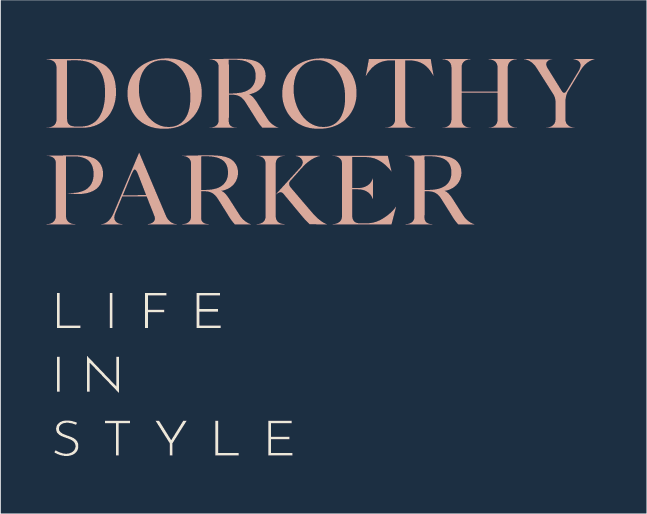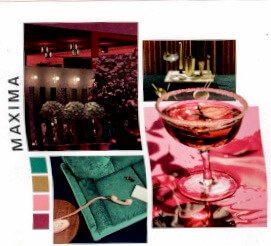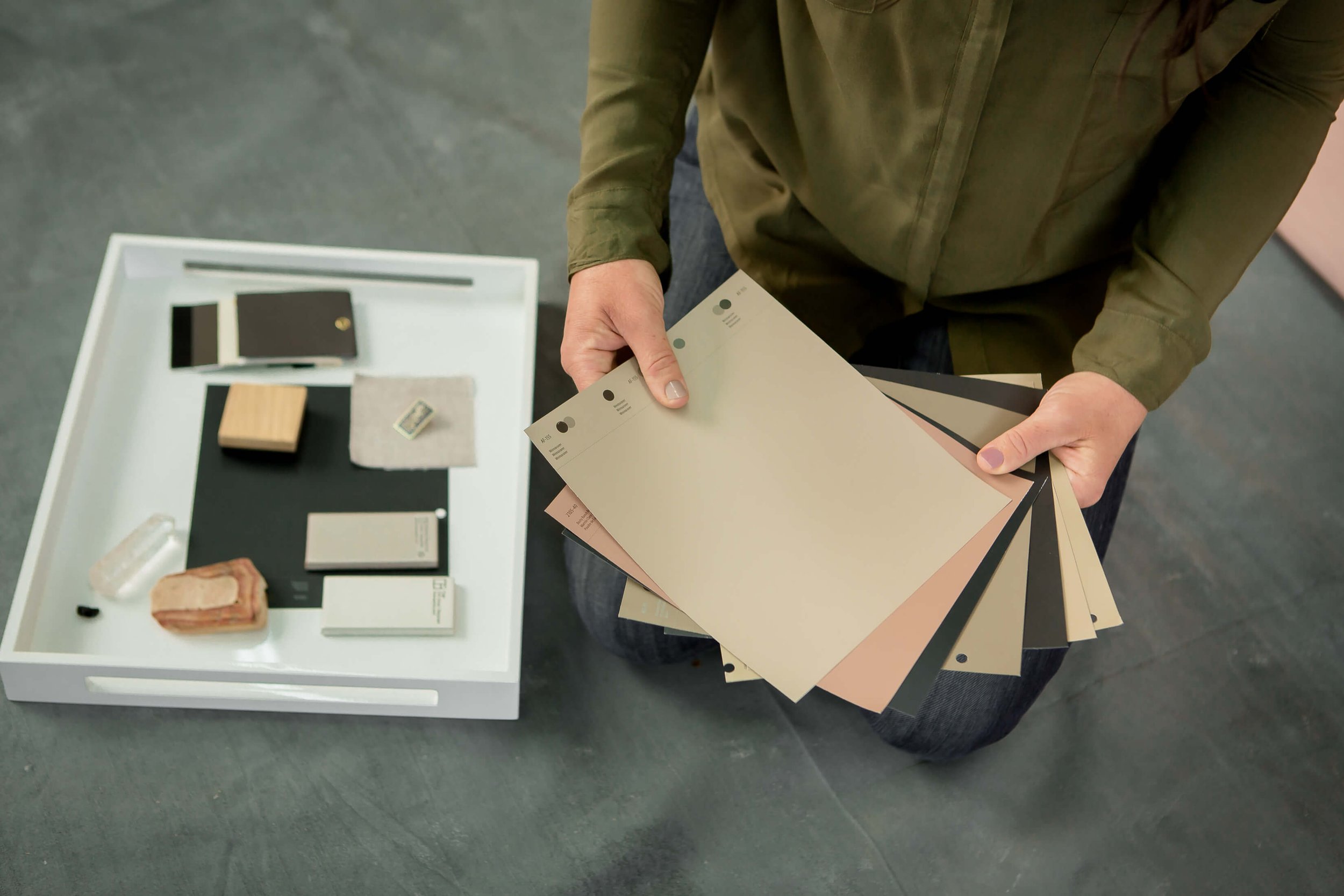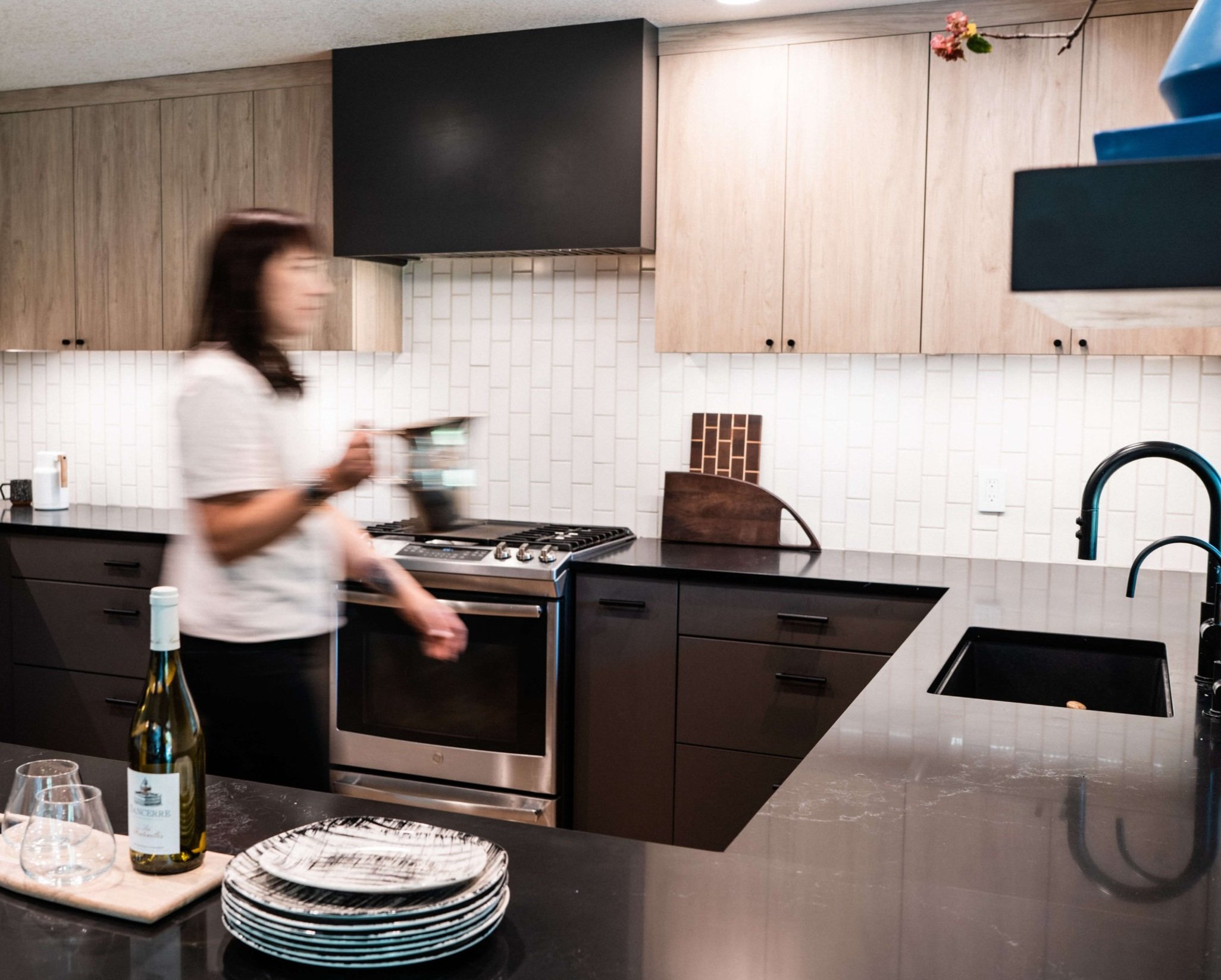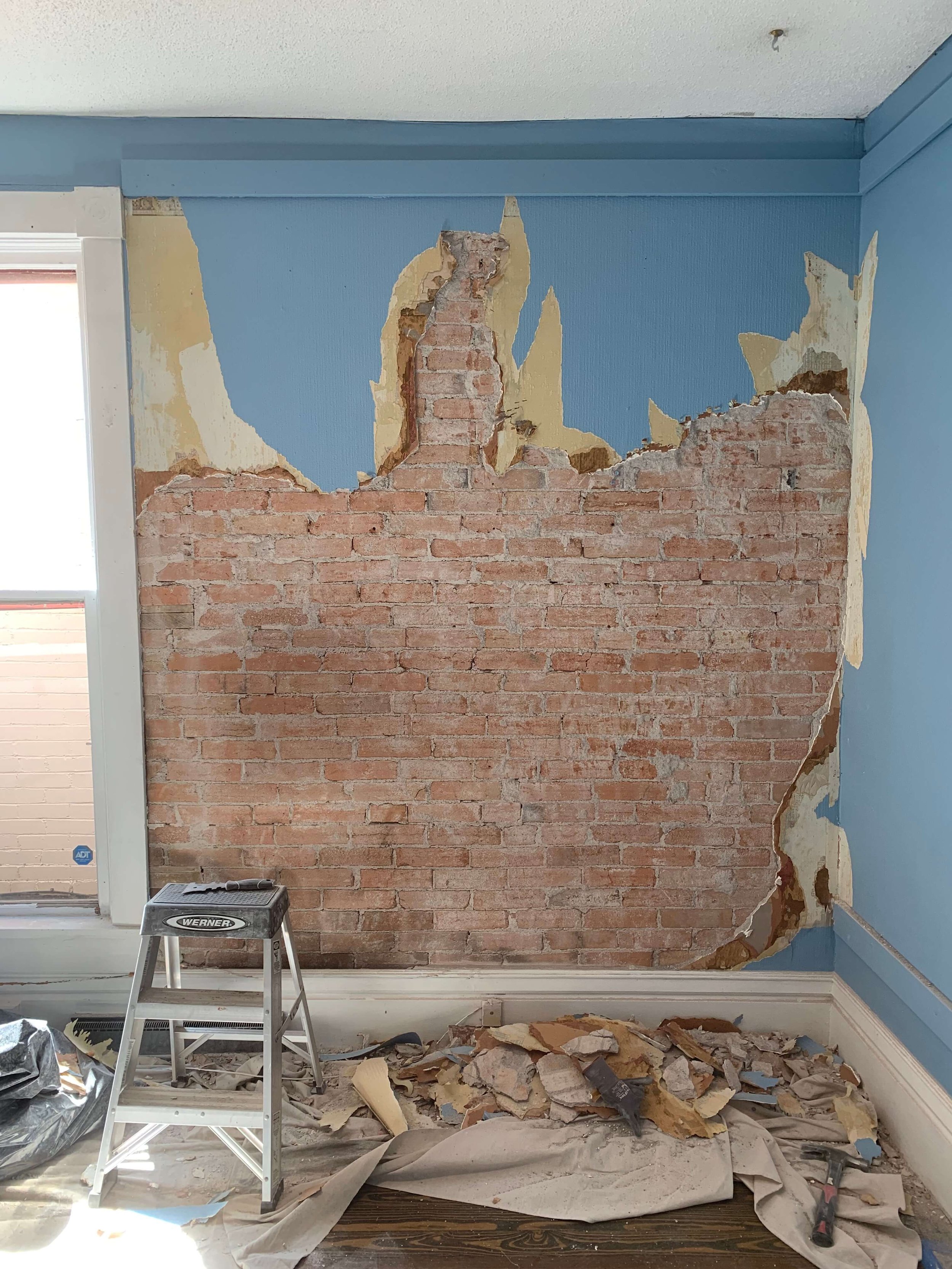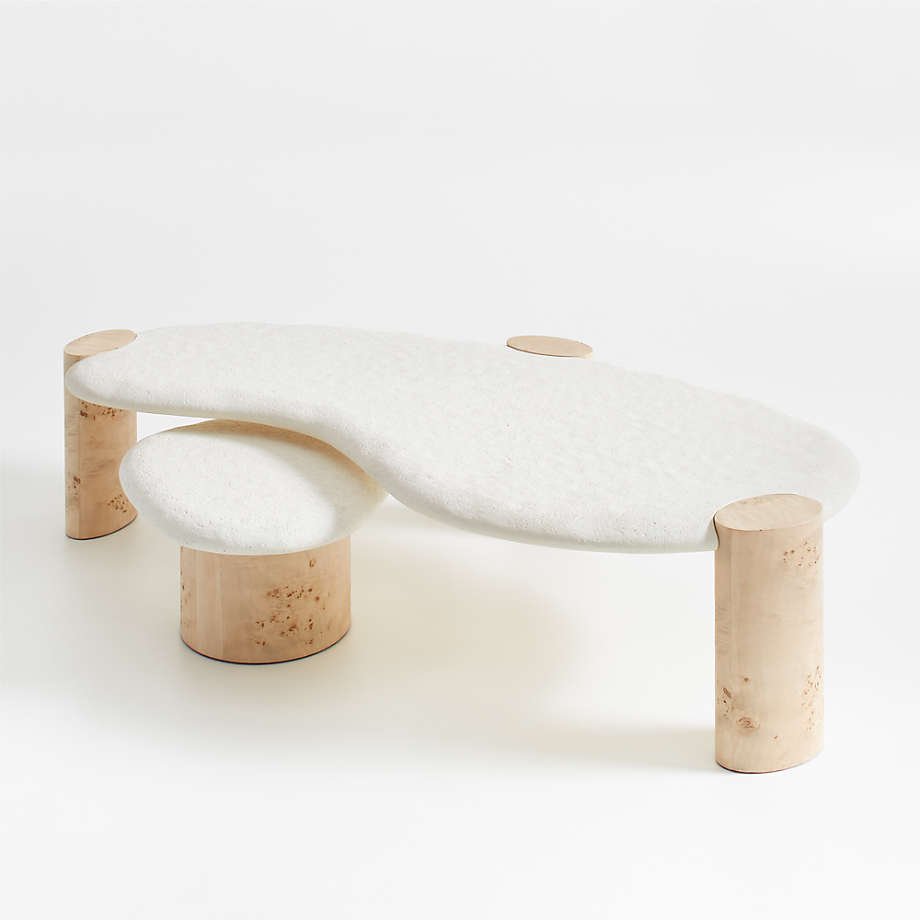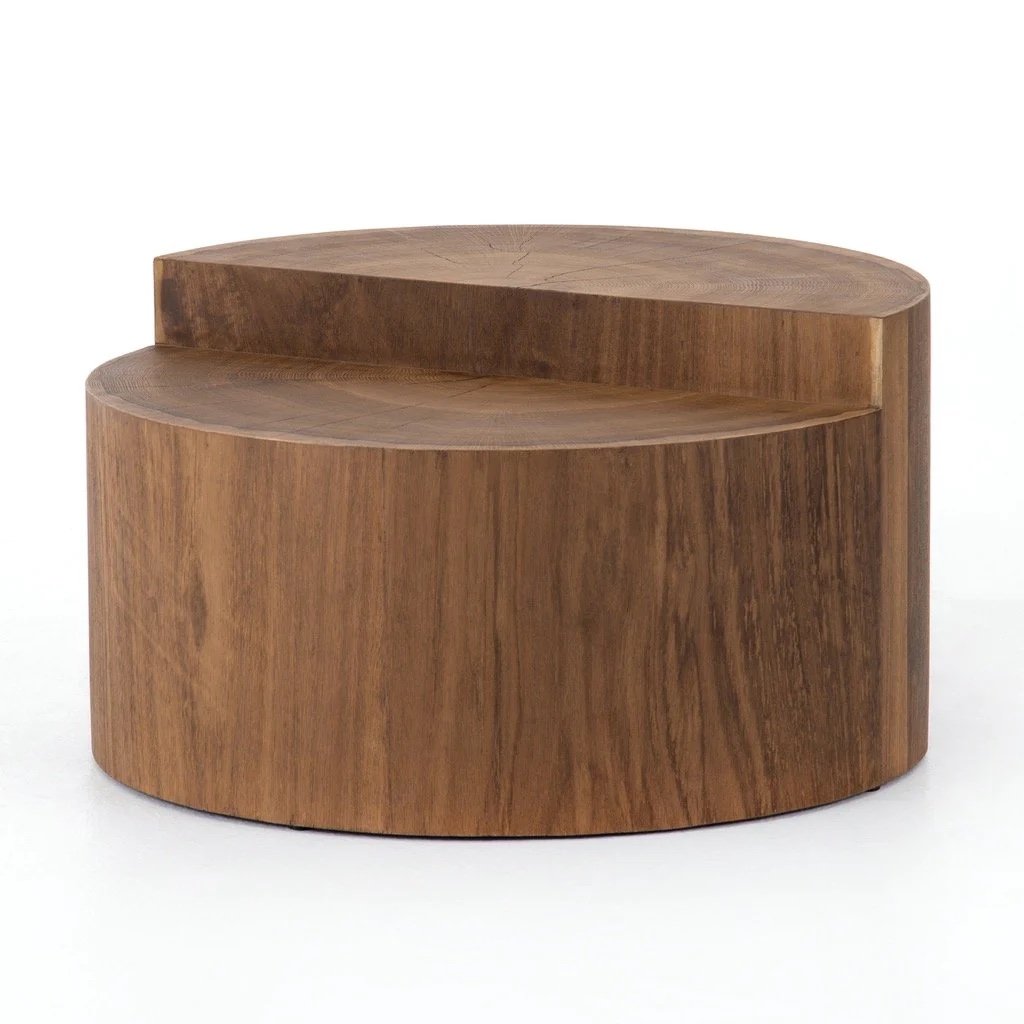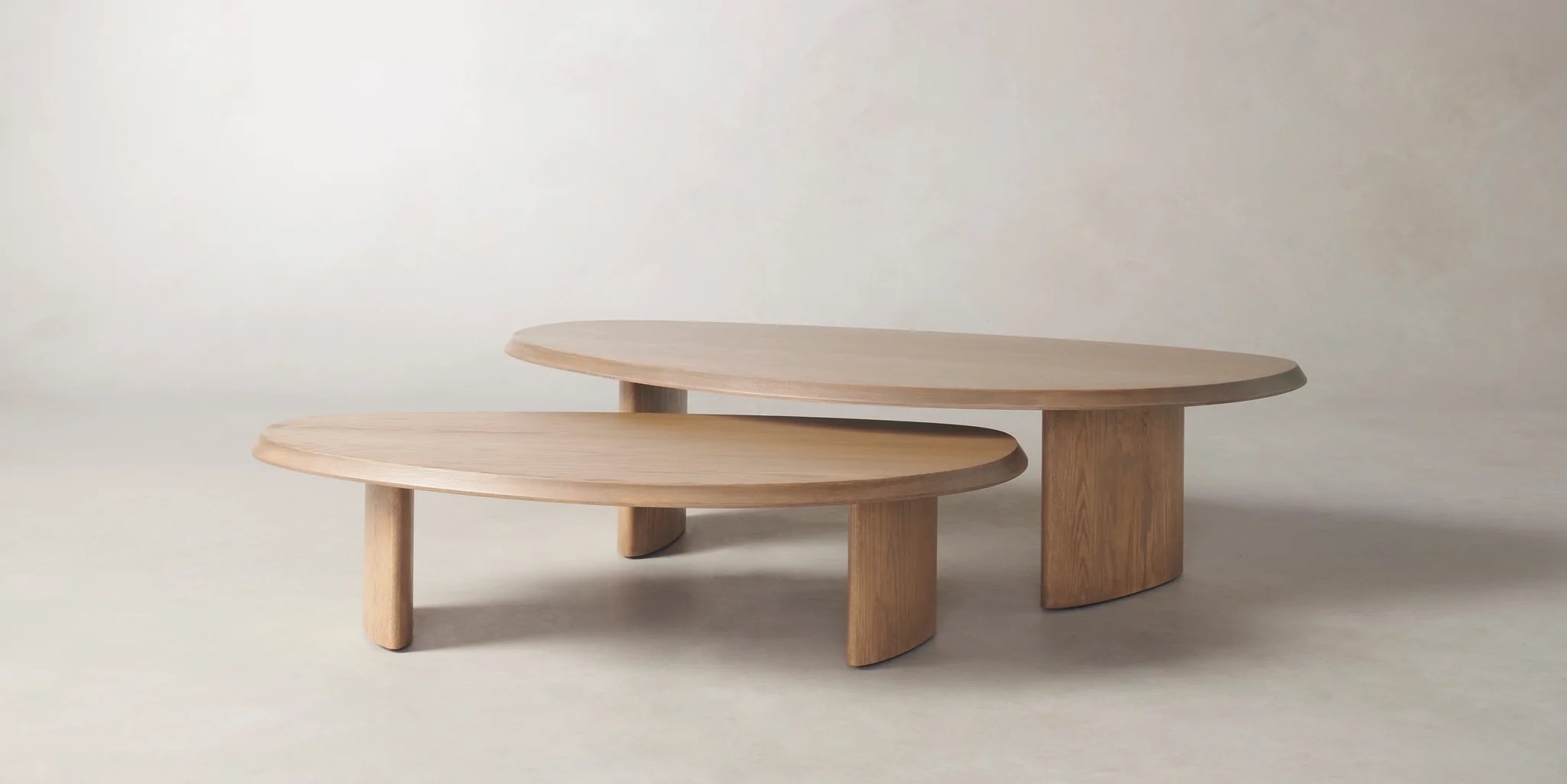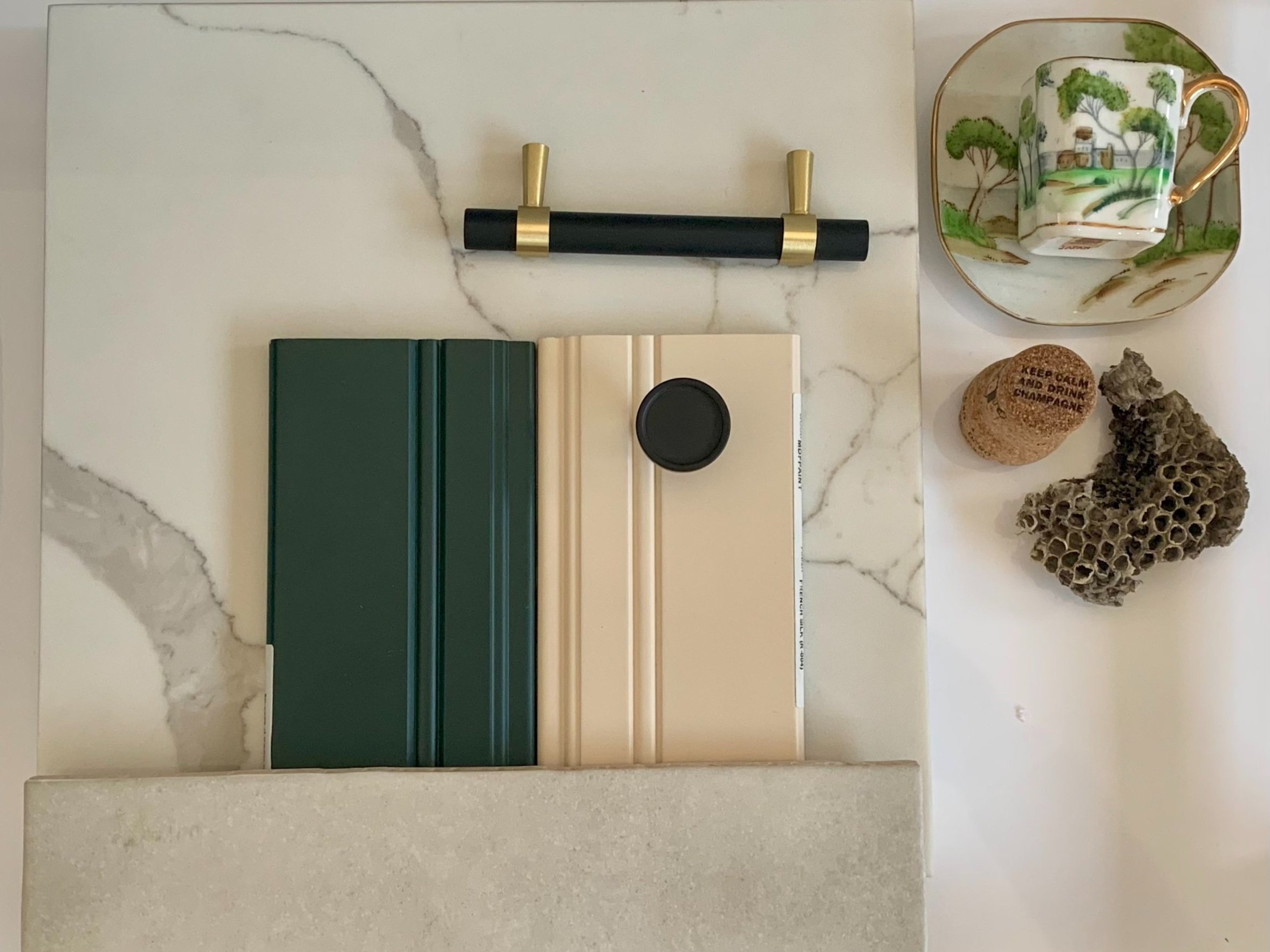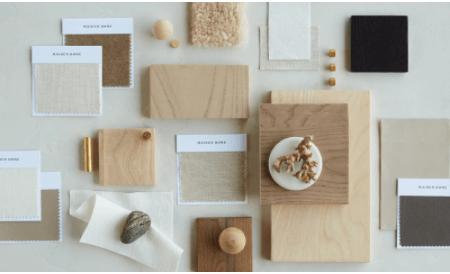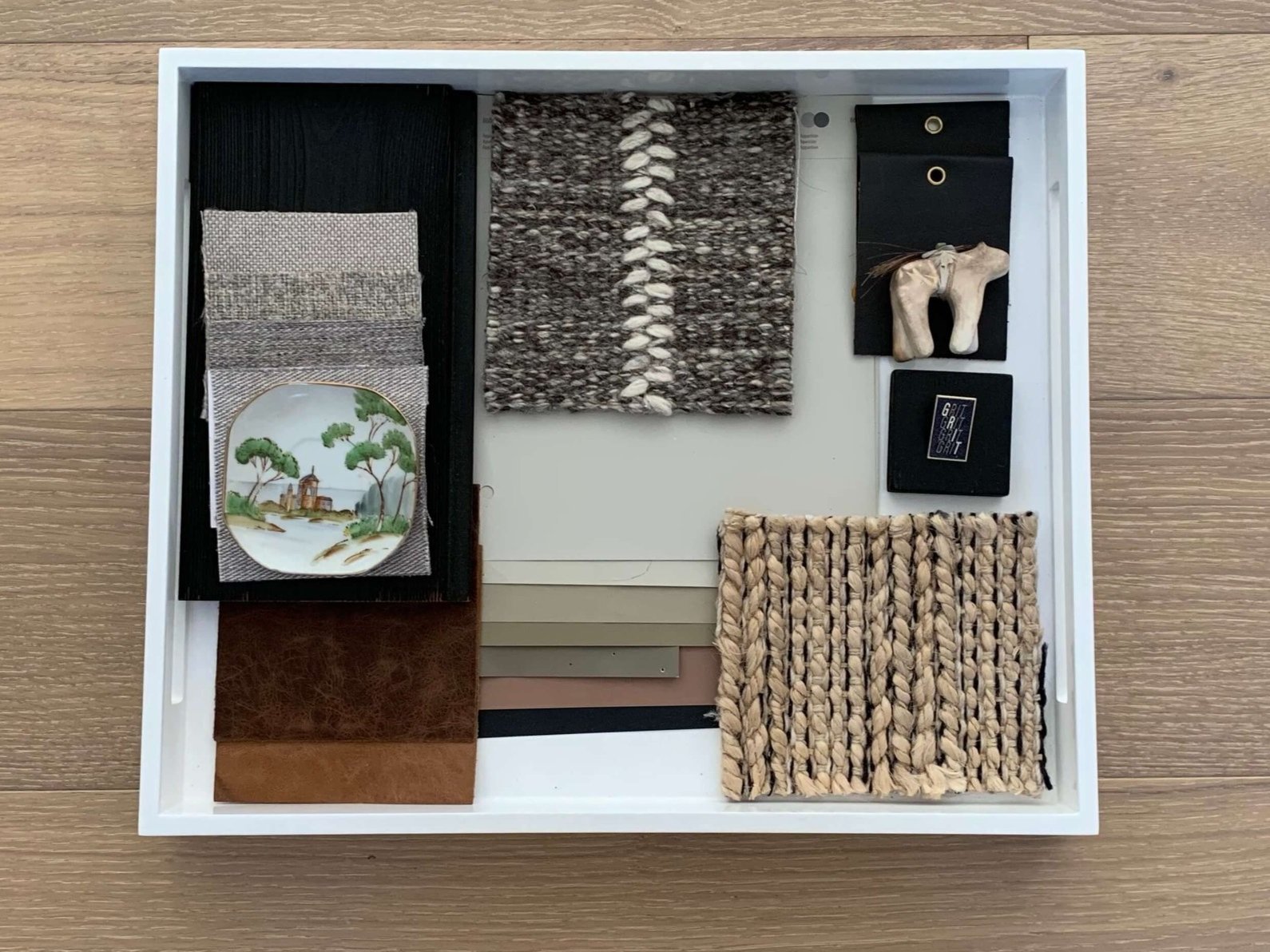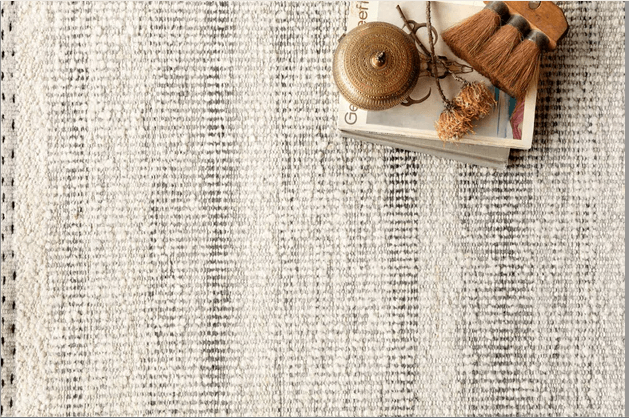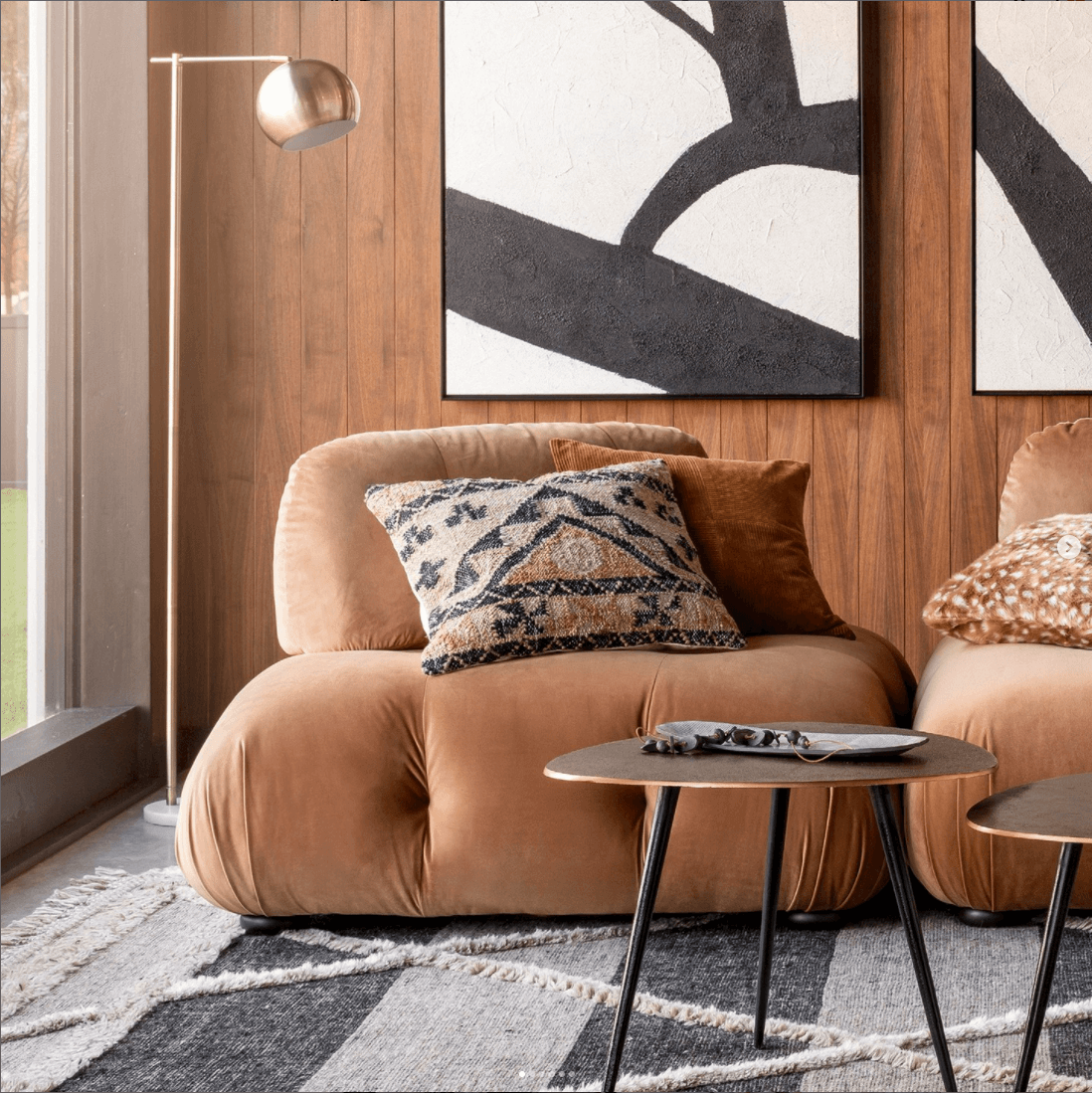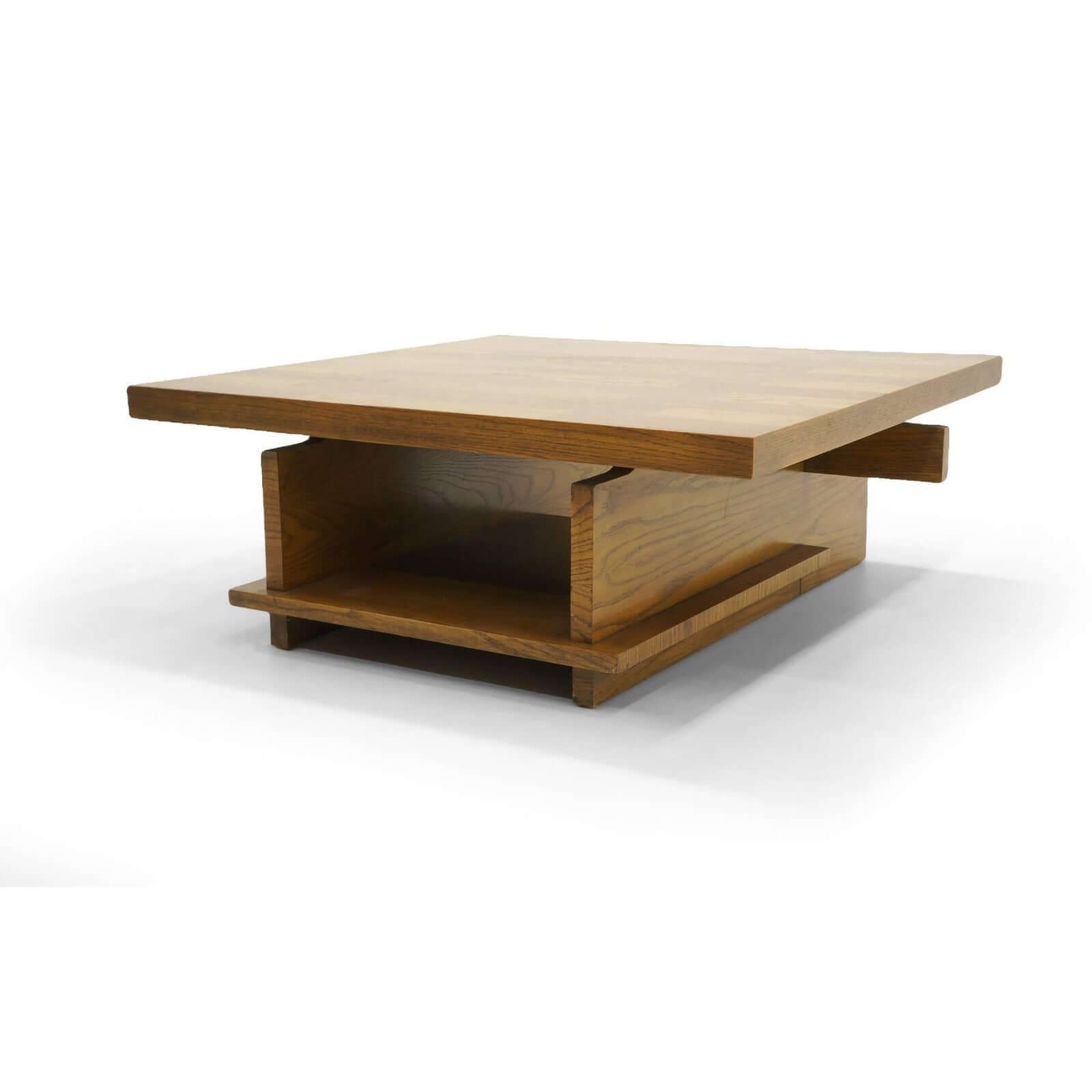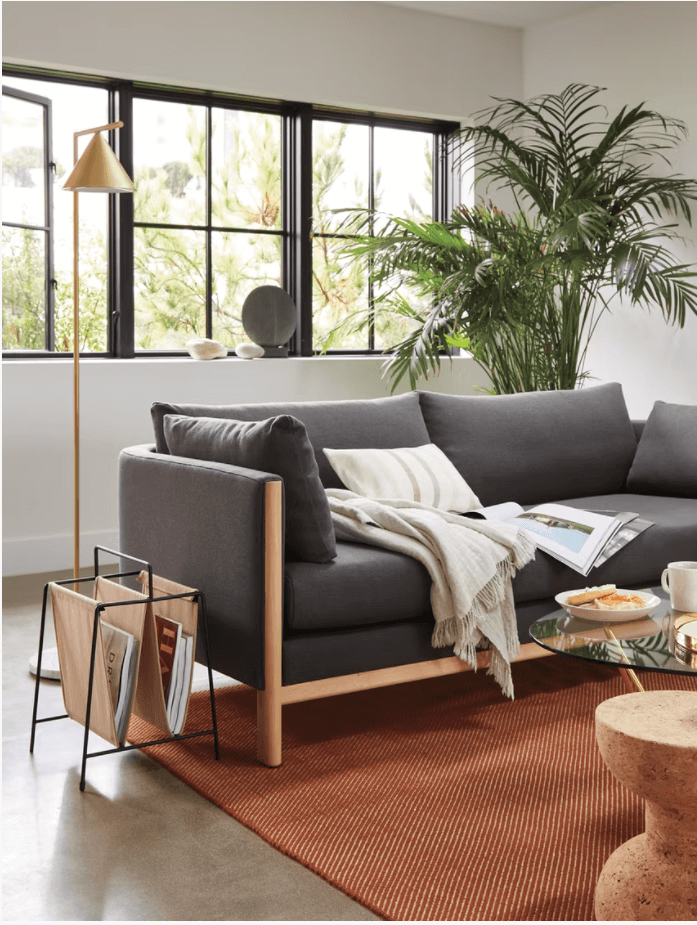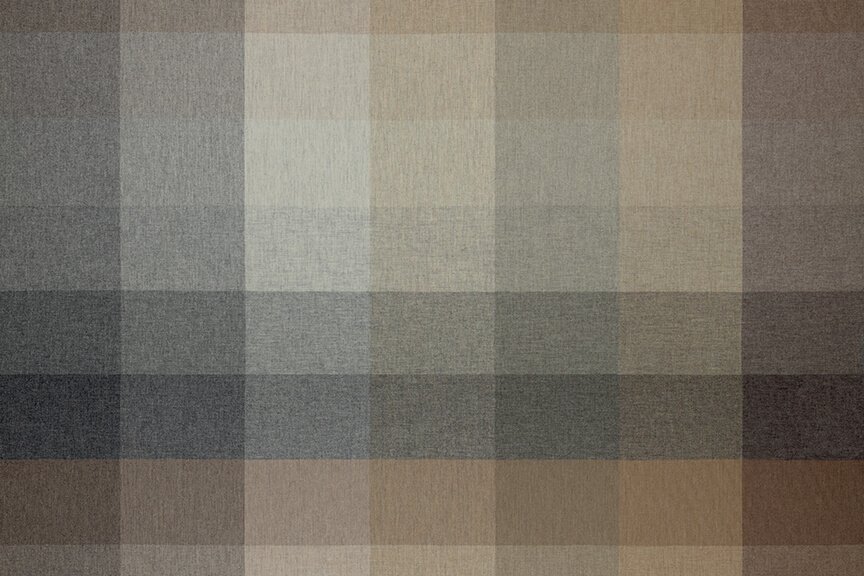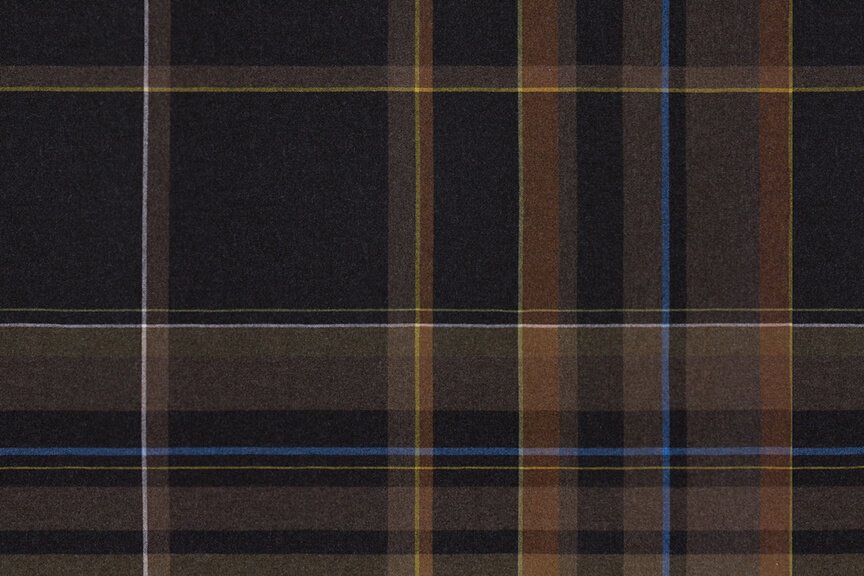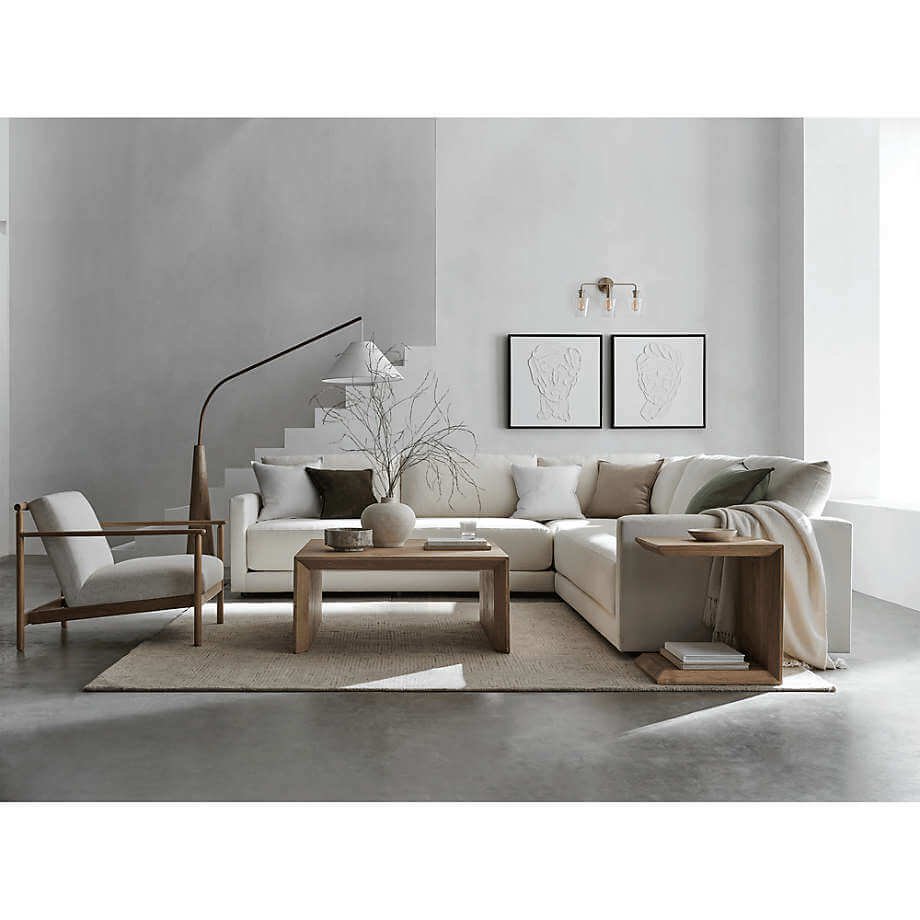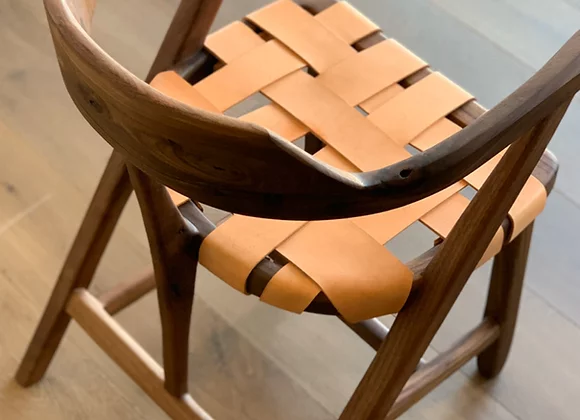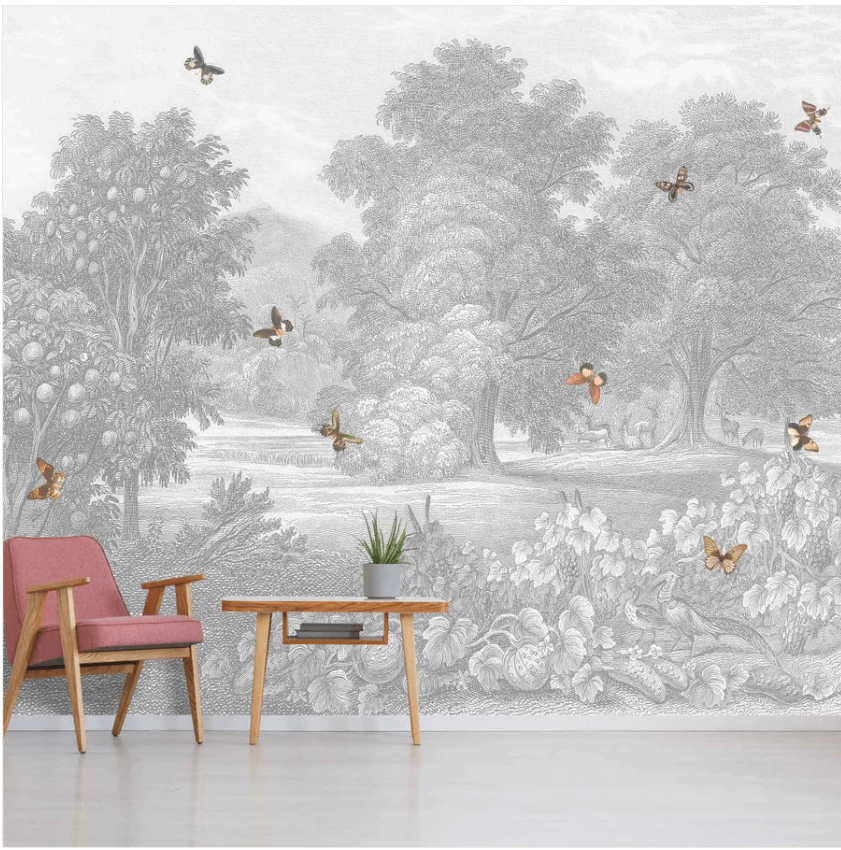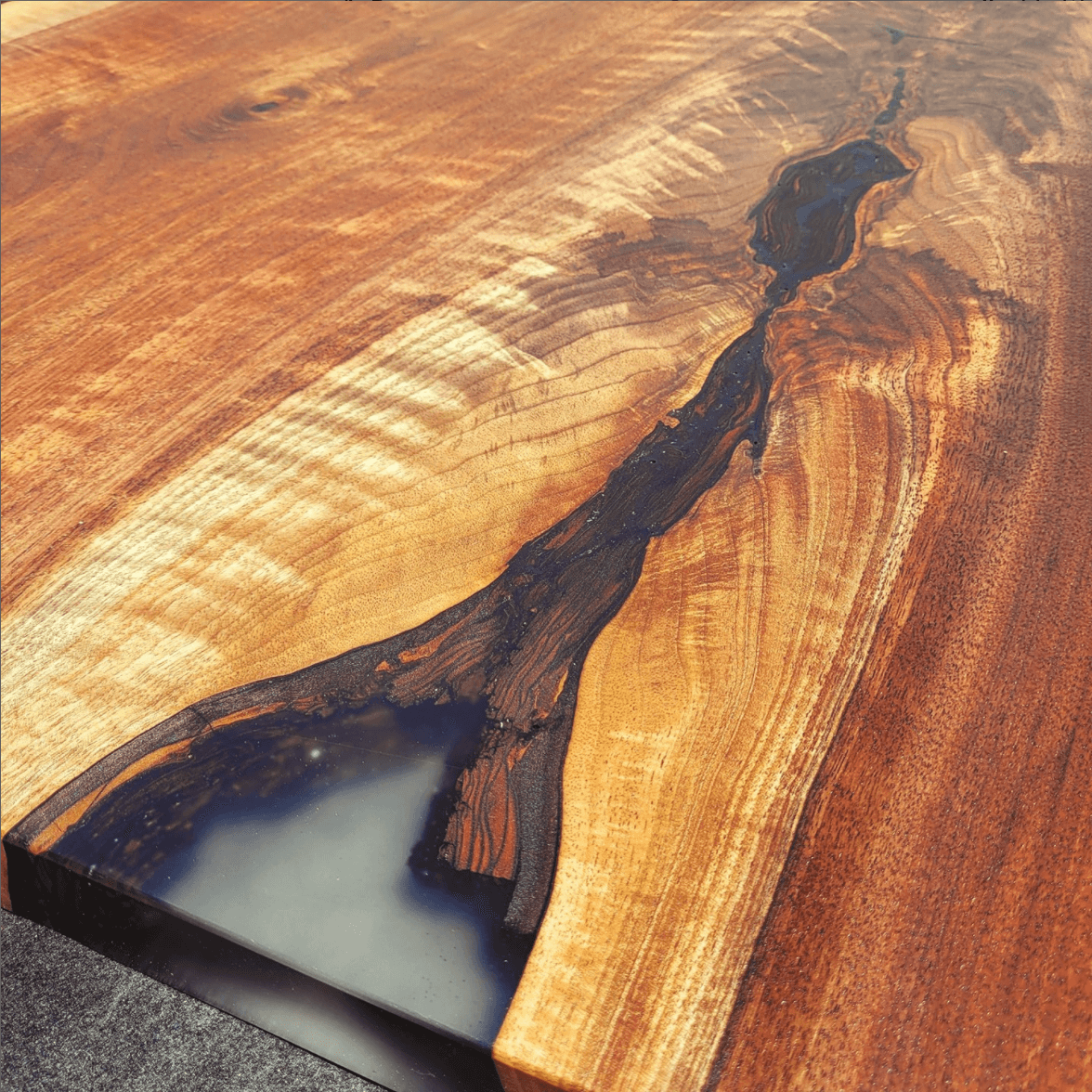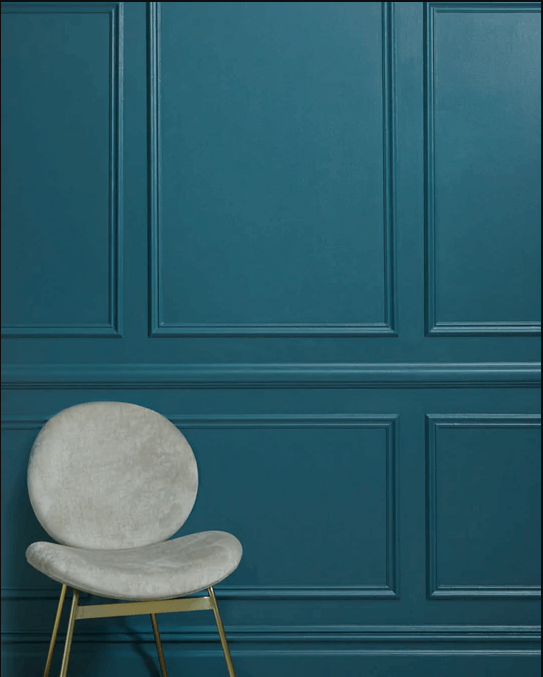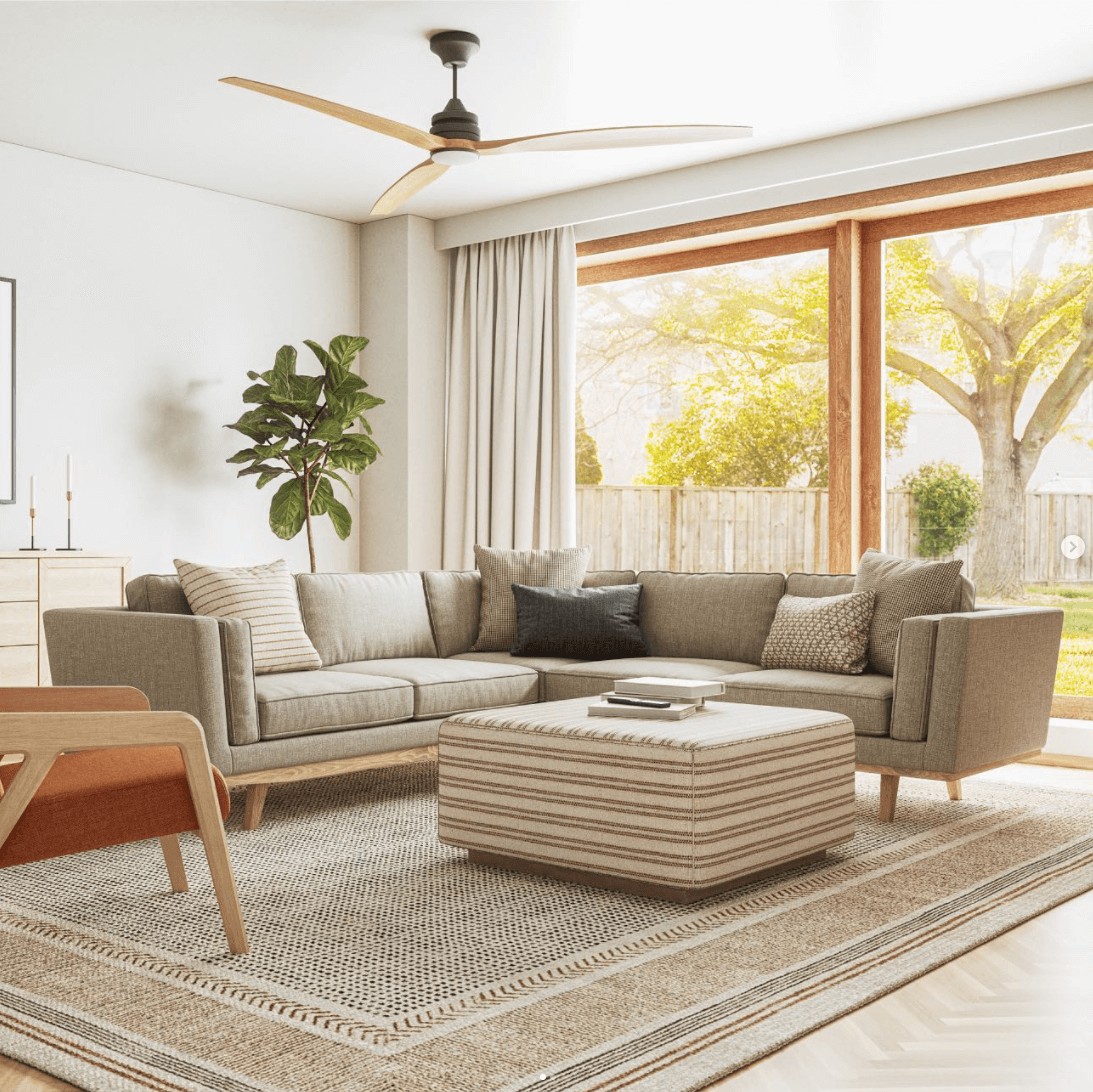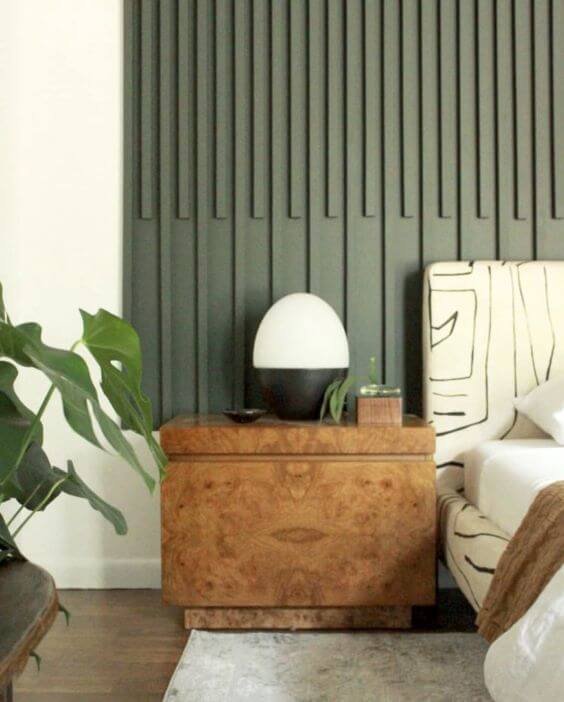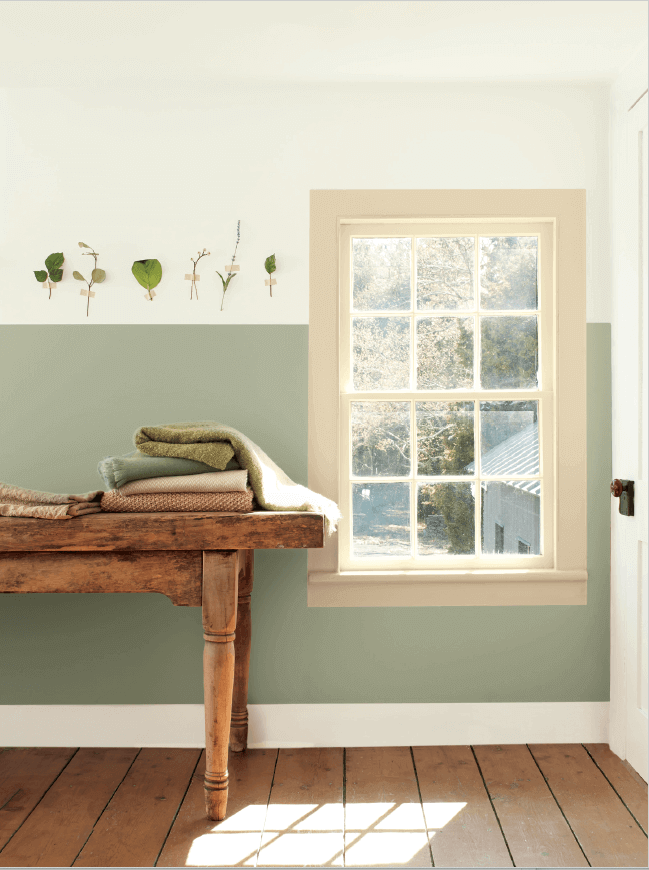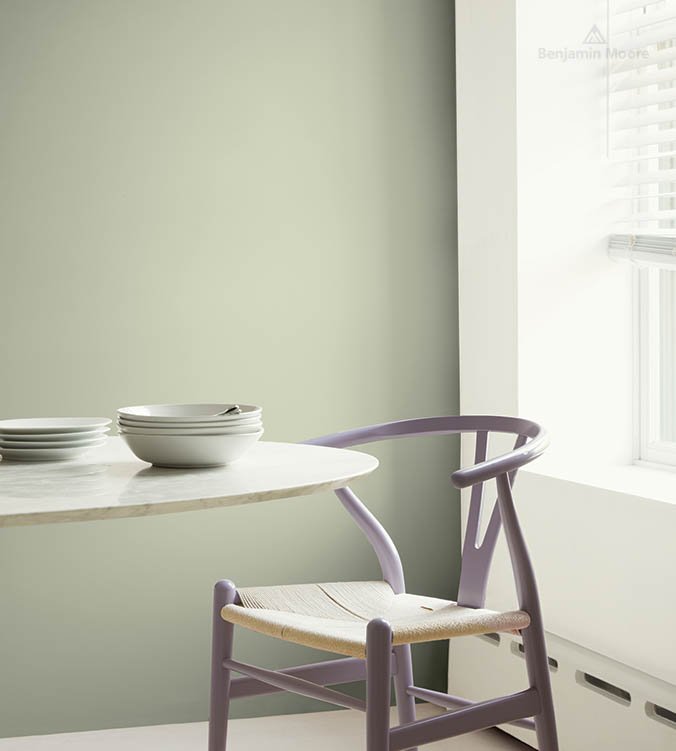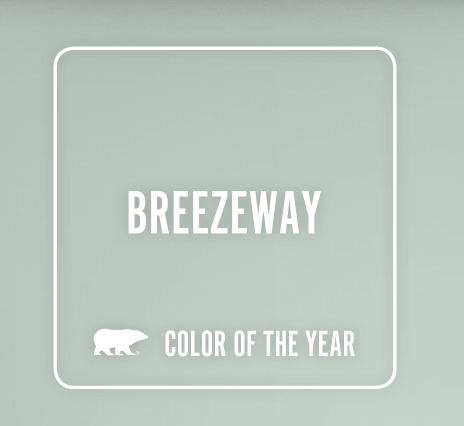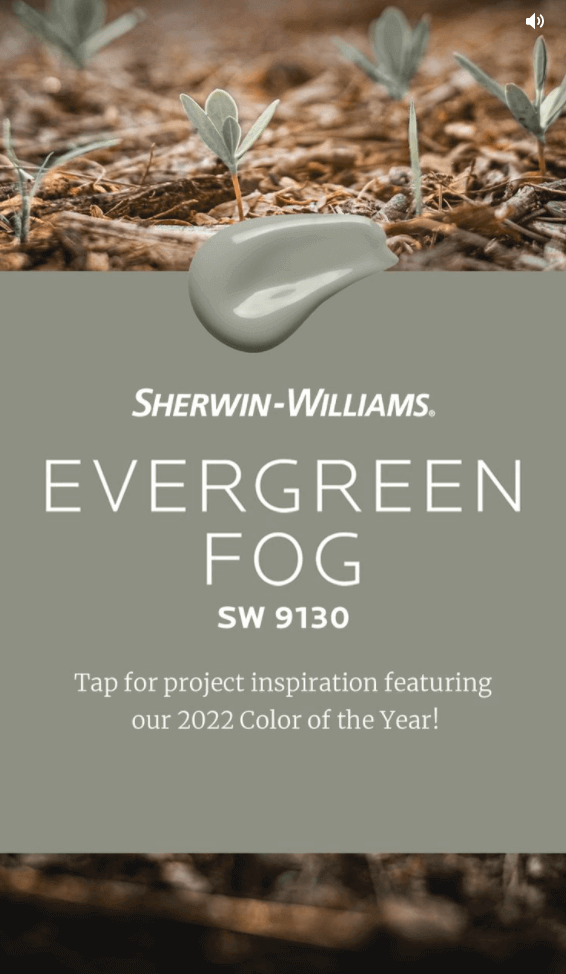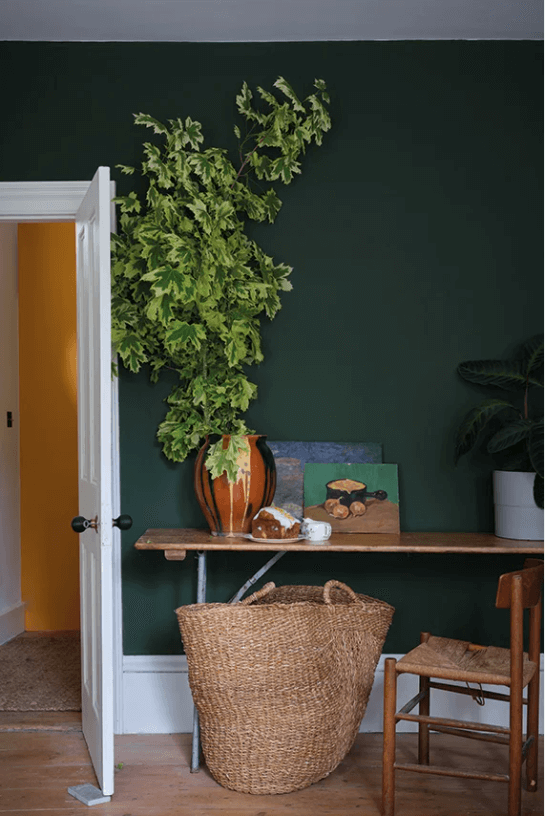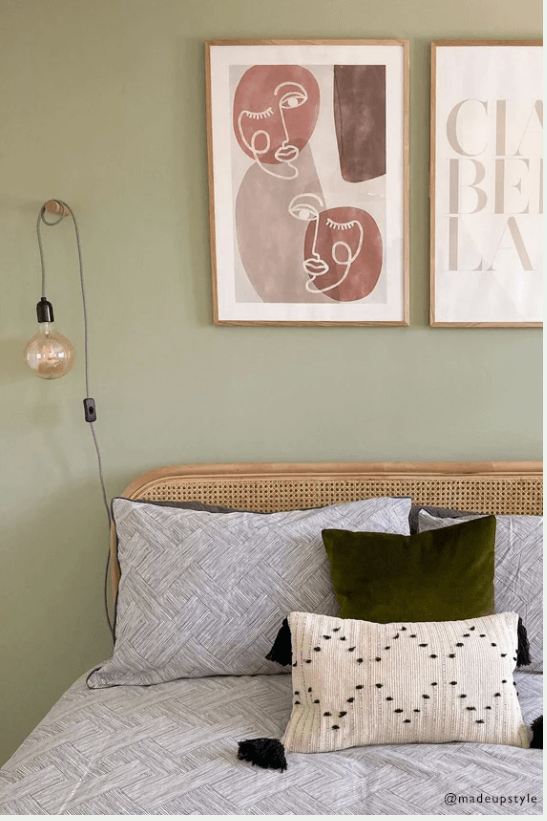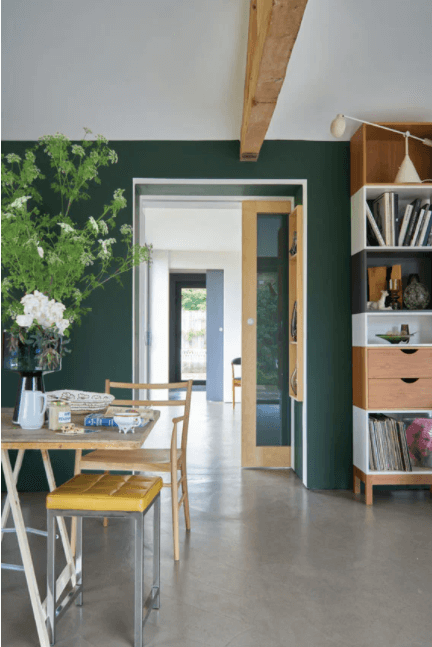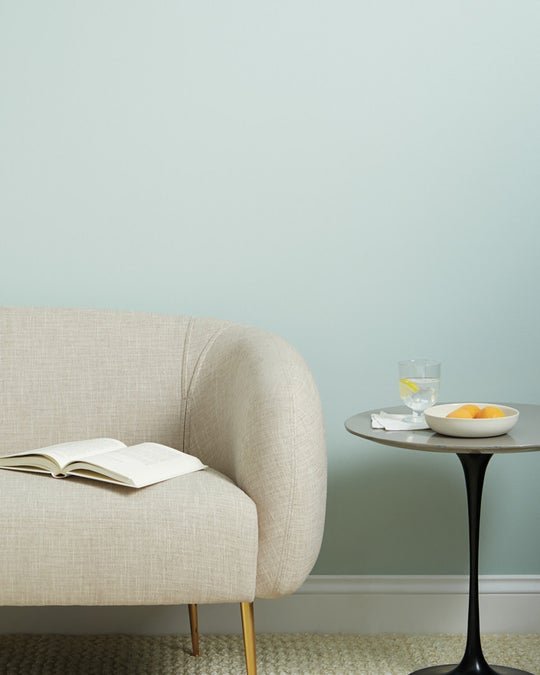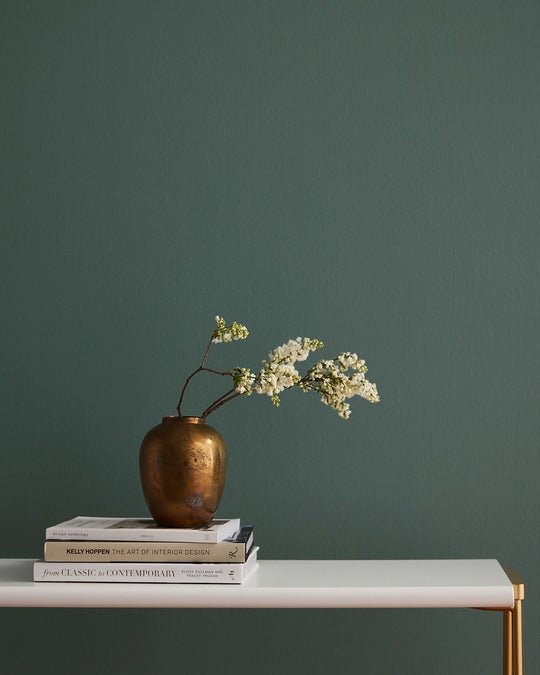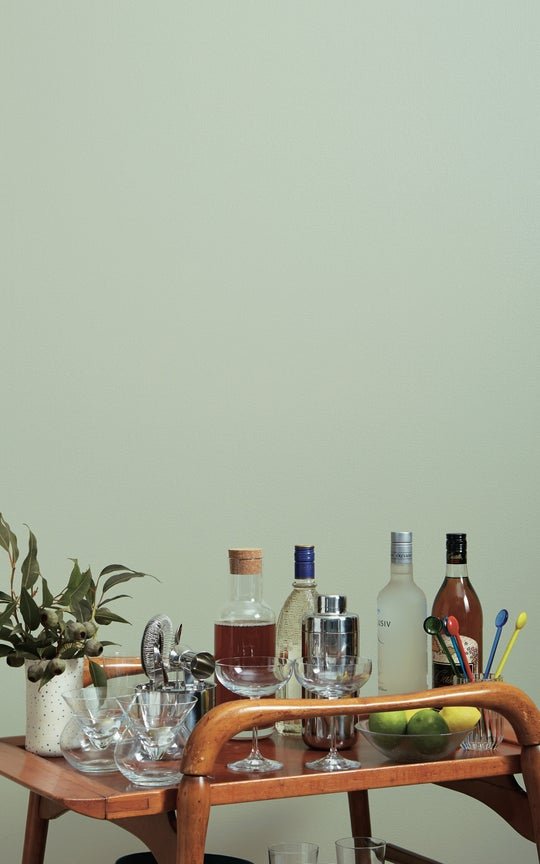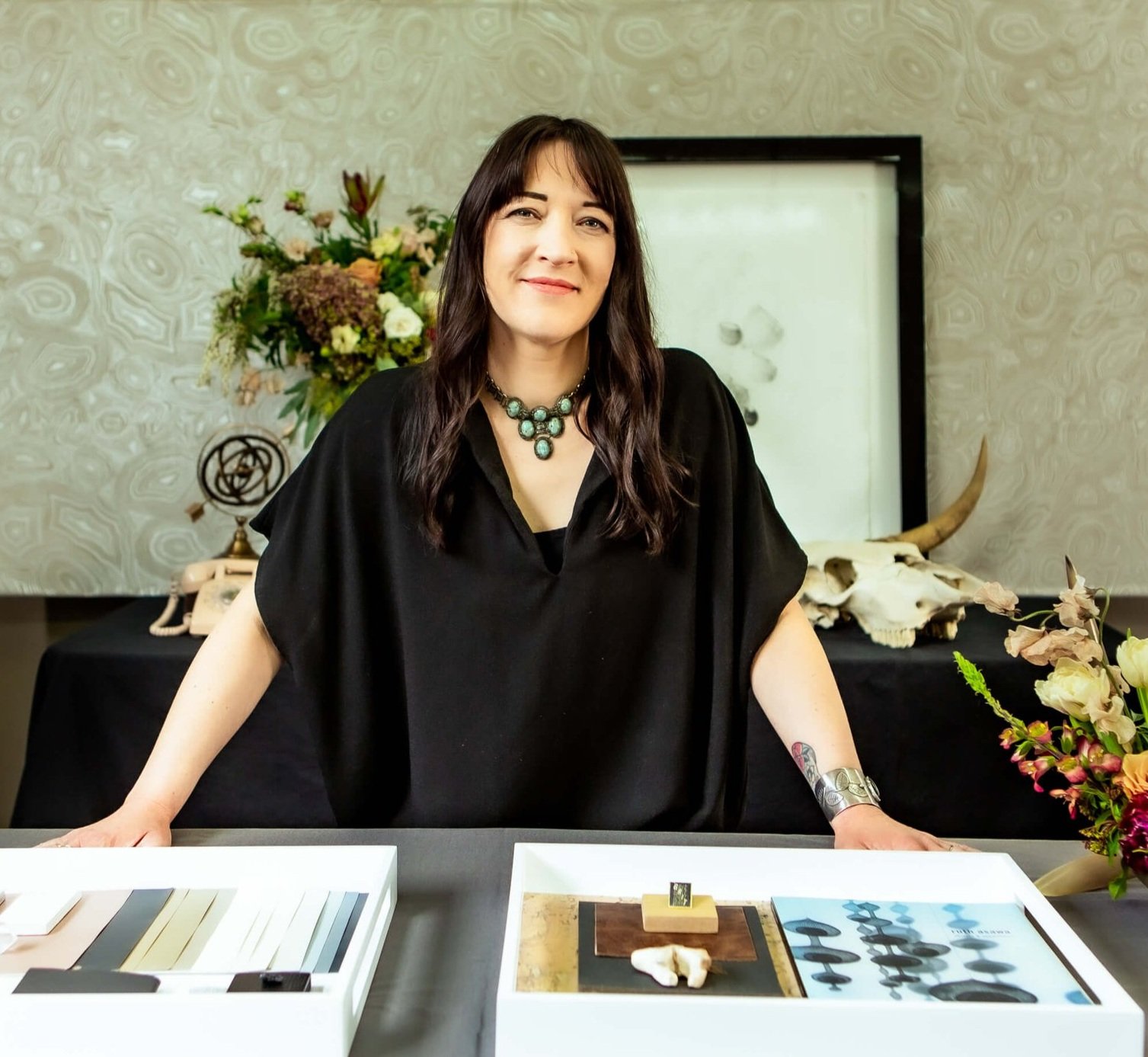Interior Design Premiere: Highlights from High Point Market, Spring 2024
HIGH POINT MARKET: “The Home of Home Furnishings.”
Read all about my experience at High Point Market, the largest US interior design market with showrooms, parties, networking, and events. This market encapsulates everything that relates to interior design and the interior design industry.
HIGH POINT MARKET
“The Home of Home Furnishings.”
Going to any industry market is an immersive experience in product, parties, networking, and events - High Point Market in North Carolina is no exception. This market encapsulates everything that relates to interior design and the interior design industry. I’m excited to share about my first ever #HPMKT and I have so much to think and talk about!
MARKET STATS:
Days attended:
3
Showrooms visited: 25+
Steps taken: 34,794
Coffee breaks: 6ish
Cocktails enjoyed: 6ish
Events attended: 4
Tote bags collected: 7
Photos taken: 641
Miles traveled: 3,790+
My Top Three
Favorite Showrooms:
Verellen
CFC + Noir
Rowe
MARKET DAY ONE:
FIRST STOP: Cisco Home showroom. I’ve been working with Cisco for many years now and I like a lot of things about them. First, like much of my vendors, their furniture is made in the US. Depending on what it is, their furniture is made in either Los Angeles (their home base where Cisco was founded) or High Point, NC (where the majority of stateside furniture is made). I loved seeing their new designs and textiles, all of which are thoughtfully made and eco-friendly.
Next up:
Keynote speaker, Bunny Williams!
Bunny has been doing interior design since the 1960's and has a wonderful new book out called “Life in the Garden’. This is her fifth book and every attendee received a free copy. Hearing Bunny talk about her personal and expansive garden was so inspiring! Saying that I am a garden novice is an understatement. However, Bunny just may have inspired me to start small (aka “Fibonacci that shit” - Tiffany Han) with some containers.
ONTO THE NEXT SHOWROOMS!
There are approximately 2,000 vendors and around 180 buildings in High Point so deciding on which one to visit came down to what neighborhood my scheduled events were located. I wanted to be as efficient as possible and not waste time. Since I was already in the IHFC building, all I had to do was walk a couple of doors down to check out the showrooms in this building that is five wings and eleven stories high. Shown here is a vintage postcard that pictures the IHFC building when it was build in 1921,
NUEVO:
The Nuevo brand is known for their clean, contemporary furniture and lighting. We particularly loved their beautiful color palettes which included upholsteries in creams, rust, blacks, and grey colorways.
We love Nuevo not only for their style, but their customer service is stellar. We recently ran into an issue with a coffee table from them and they didn’t hesitate to make it right.
NOIR:
This brand actually has two showrooms in High Point and I loved them both. Their furniture and lighting is designed in Los Angeles and as their name implies, the feeling is moody and unique. There was a lot of vintage inspired furniture, including pieces that were reminiscent of the 1970’s and some pieces that had design elements from the 1940’s. Their sister brand, CFC, is very similar, the main difference is that their furniture is all customizable and their furniture is made by hand in California where Noir is neither of those things.
HP/MKT DAY TWO
Monday morning was the Hot Spot Tour with design influencer, Jaclyn Isaac, from Doni Douglas Design in NJ. Jaclyn is a vintage aficionado and took us to the best vintage and antique booths at the market.
My favorite vintage finds were:
1) A pair of vintage lounge chairs, estimated from the 1970's, reupholstered in a 70’s inspired gold and brown check velvet.
2) From the beloved San Francisco artist, Ruth Asawa, a wire-knit hanging sculpture in her infamous style.
3) From Westend Antiques + Project One: A brown and gold coffee table, circa 1960's. The patterns on it were reminiscent of water on a heavily textured canvas.
The rest of Monday I was up in those High Point streets and hit a ton of amazing showrooms and booths. But first, cocktails, snacks, and caffeine to keep me going.
That afternoon, I made a visit to the 211 E Commerce building which houses some serious powerhouses when it comes to furniture showrooms. Rowe was first, and they did not disappoint. Their showroom was huge and they had a lot of different ideas and styles. There were many displays and vignettes that I loved and in one area, they partnered with influential designers to make beautiful living spaces in different styles.
This building had four stories and was a full city block. After my visit to Rowe which was right at the entry and came highly recommended because of their excellent open coffee and snack bar, I went straight up to the fourth floor and worked my way down.
FOUR HANDS
Wether you know it or not, you have seen Four Hands furniture. Headquartered in Austin, Texas, it is a top global designer and wholesaler of innovative lifestyle home furnishings. You can find their furniture from large companies, such as Lulu & Georgia to local stores like Artesanos.
SURYA
I stoped by the Surya showroom because of their launch party celebrating their collaboration with Becki Owens. The tagline for this collection is “Approachable Styles for Every Home” and I would agree. The line featured rugs with classic styling with a modern makeover. There were also neutral pillows and throws for the added layer.
Show here is the bar located inside of the Surya showroom. This showroom was one of many with cafes, bars, and lounges that were throughout the Market.
HOOKER FURNITURE
For nearly a century, this company has maintained an impressive flagship showroom in the IHFC building in High Point. Spanning approximately 90,000 square feet, this showroom highlights the enduring quality and timeless appeal of Hooker Furniture's pieces. Renowned for their longevity and diverse range of styles, Hooker Furniture offers an extensive selection of products that cater to various tastes.
MARKET DAY THREE
Tuesday was my last and possibly my favorite day. I got to the market early at 8:30am (6:30 Colorado time!). Things were definitely happening, especially at the coffee truck. I got my regular oat-milk latte, caught up on some emails and quickly hit a few near-by showrooms.
I didn’t meander too long as I was excited to make it to an industry panel all about trend forecasting and textiles, two of my favorite things!
“INSPIRING THE FUTURE”
This Panel was hosted by Jaye Mize, the VP of Creative at Fashion Snoops (FP) on the textile trend forecasts that were determined at the end of last year and it’s impact on the textile design process.
Fashion Snoops is “the leading trend-forecasting platform that validates consumer behaviour with data, connecting the dots from cultural influence to product innovation.”
Together with the Textile Alliance, Jaye and three guests from the Alliance discussed interior design trends, textiles, in addition to adding their personal experience to what FS has found. There were many takeaways but my top three were these:
ARTIFICIAL INTELLIGENCE
You can't listen to the news today without hearing about the triumph and fear surrounding artificial intelligence. That said, designers such as Kelly Wearstler have embraced AI as a very capable design tool. The overarching caveat is that human interaction is needed to edit the results. We as consumers (aka human beings) need to be sceptical and learn to discern the subtle differences.
This image was made by me with Ai.
I gave Chat GPT this prompt: “Hi, please generate an image of a stylish woman sitting in a beautiful chair with a dog, her outfit should be floral patterned and it should feel similar to the image I've attached.”
SUSTAINABILITY
Many of you know that at Dorothy Parker Design, one of our top values is sustainability. Because it’s a part of our business model, it’s no surprise to me that sustainability is a large trend.
What’s interesting is that wellness and sustainability are now interwoven into one category whereas before the were very separate. We are seeing the demand and the desire for healthier homes, and better made products across the board.
Generational Differences in Design
I love learning from our youth. It is so important that we listen to what they say and take them seriously. Gen Z was born between 1997-2012 and their current age range is 12 – 27. The focus was on older Gen Z folks. It’s no surprise that Gen Z and the Baby Boomer generation express themselves differently.
Baby Boomers’ style is their identity. If they like sailing, you will likely find that their home and some of their clothes will have a sailing theme.
On the other hand, Gen Z is being described as “Trend Agnostic”. They also feel like anything and everything can go together, think eclecticism that meets rule-breaking
(which we love here at DPD). With Gen Z Nostalgia, Ancestry, and values are on full display
Further Trend Exploration For The
Emerging Interior Design Fall 2024 &
Winter 2025: Key Forecasts and Definitions
QUIETUDE
“At the center of occasional solitude, there is harmony. When we are unencumbered by distractions, we can recharge and recenter. Brown shades with orange undertones, delicate pastels, and refreshing neutrals bring a sense of peace and serenity.
Seacell fiber blends, bio-based contract textiles, brushed tactility, 3D printed ceramics and carbon-neutral concrete are all ideal examples.”
ART DE VIVRE
“Fresh aesthetics combine with storied historical artifacts. A resurgence of Victorian design sensibilities infuses timeless luxury into modern pieces.
The color palette is inspired by a fall sunset - muted oranges and yellows - alongside a spectrum of blue hues and forest greens. Think crafted cane, hand blown and sculpted glass fixtures, intricately carved hardware, Neo-traditional tufting, oak and mahogany woods.”
MUSE
“Gather inspiration from a curated assemblage of old and new artisan motifs. When looking through the lens of a modern-day collector, let heirlooms and traditions be your guides. Sunshine yellows, tender greens, and delicate pinks and purples create a vivid fusion of old and new.
Mixed crochet, epoxy cast resin, fuzzy piles, vintage and upcycled patchwork, reclaimed leather, and painterly melts all showcase this trend.”
MAXIMA
“Channel the romantic, free-flowing energy that defined the 1970’s. Engage senses with luxe textures, plush materials and cinematic vignettes. Saturated jewel tones - punchy pinks, buttery caramels and sapphire blues - evoke a dreamy, immersive mood. Envision vintage burl woods, colored glass, warm toned marbles, dense and lustrous velvet and gathered drapery.”
Honestly, I loved everything they discussed and have noticed elements of each one in my projects and products. Sometimes, even a combination of elements from multiple categories since every design we create is customized for our clients. This event could be a full blog post, and maybe even will be, but I did do other things on my last day at Market…
Despite my fatigue, I didn't want to miss the last few showrooms on my list, which included Norwalk, Curry & Co., and my final visit was to Verellen (a Market favorite of mine).
Norwalk Furniture
Interior designer Kim Salmela collaborated with Crypton® Fabrics to launch her first textiles collection, which debuted at Norwalk Furniture while we were there during Spring High Point Market 2024. The fabrics feature relaxed, organic, and modern designs inspired by the textures of vintage rugs, tapestries, and textiles from her travels.
Corbett Lighting + Noz Nozawa
Noz Design, from my other hometown of San Francisco, launched a gorgous maximalist lighting line with Corbett Lighting. Merging Noz Nozawa's illustrious interior design career and passion project of designing jewelry, her debut lighting collection tells the brilliant story of what's possible when these two art forms collide. Also shown here is another amazing San Francisco artist, Caroline Lizarraga, who launched her first wallpaper collection based on her hand painted fine art designs.
Verellen
I first started using Verellen when I worked for Ken Fulk many years ago. We loved that they made everything in a contemporary Scandinavian style and it was all fully customizable. More than fifteen years later, their styles and their values still resonate with me.
I love their clean lines and just how comfortable their furniture is. I am also impressed that they have focused on sustainability for all these years, even before it was something people sought out.
Conclusion: High Point Market - A Center of Inspiration and Innovation
Overall, High Point Market was a fantastic experience, it was filled with inspiration, insights, and valuable connections. From Bunny Williams' inspiring keynote to the engaging panel on trend forecasting and over twenty five showrooms, every moment offered something new.
The showrooms showcased a wide range of styles, from vintage finds to contemporary innovations, highlighting the diversity in interior design. Fashion Snoops' trend forecasts were particularly insightful, and I’ve loved incorporating those elements and explaining it to my clients and their projects.
Reflecting on my time at the market, I'm eager to apply these new ideas to create spaces that continue to blend beauty, functionality, and sustainability.
High Point Market was an invaluable experience, and I look forward to sharing more insights in future blog and Instagram posts. Thank you for joining me on this journey!
What is your favorite trend, showroom, or product shown? Let us know in the comments!
Don’t forget, sharing is caring. If you know someone who might be interested in this piece feel free to pass it on!
Designing and facilitating a sustainable home and lifestyle for our clients is at the core of what we do at Dorothy Parker Design. Dorothy Parker is a certified Green AP through the Sustainable Furnishings Council and brings this unique knowledge to create a naturally beautiful home for your family.
Although Dorothy Parker is originally from Durango, Colorado, she cultivated her design expertise in San Francisco for more than twenty years. For ten years, Dorothy worked with renowned designer Ken Fulk, who is now an influential tastemaker with international projects and offices in San Francisco, Los Angeles, and New York. While working (and wearing many hats) on some of Fulk’s most notorious projects, Dorothy perfected her craft and learned the art of installation as a critical component of the success of a design.
Three things I won’t use on my design projects
Every designer has a thing or two that they won’t use. Read my blog to find out what is on my list of “don’ts”.
Interior Design styles may come and go but their materials will last longer than most of us. Every designer I’ve worked with over the last few decades has something that they wrinkle their noses at.
My former employer Ken Fulk had a long time aversion to chenille fabric. In contrast Sherry Morse, another designer I worked with, loved Chenille but wasn’t always a fan of contemporary design.
So what is it that I avoid? Hint, it’s not chenille.
Vinyl
Vinyl (also known as PVC) is everywhere but it’s my goal that it won’t be in any of my projects. Vinyl flooring is the most common use of PVC in my experience. But there is also fabric, wallpaper, window shades, and home siding all made with vinyl.
What’s my issue with it? Vinyl is called “the poison plastic” because it’s terrible for indoor air quality and the manufacturing and disposal of it is very damaging to the environment, water sources, and the people in the surrounding areas.
PVC/Vinyl is a known carcinogen and is responsible for “Cancer Alley” In Louisiana. To learn more about Cancer Alley listen to the podcast Discarded. It’s a story about both environmental justice and also how these companies target black communities to put their awful plastic (cancer) making companies in their backyard.
SWAP THIS TO THAT:
Fast Furniture
The EPA estimates that 9 million tons of furniture are thrown away every year in the US alone. Like fast fashion, fast furniture is a real problem and most of us are part of the problem. But the onus is really on the manufacturers. We as customers can only do so much and the large majority of people don't have furniture budgets that allow for furniture that isn’t something that has a five year lifespan.
While it’s pretty easy for me to steer client’s away from Vinyl products, this one is definitely trickier. Furniture is a large investment, so really my goal is to work with clients to not throw away the furniture we are replacing.
Instead of the dumpster, I recommend donating it to the Restore by Habitat for Humanity or another local non-profit who can come and retrieve the items so it’s easy for them. I also recommend trying to fix or do a DIY update on pieces of furniture. Another option is to post it on a Facebook group (for folks in Durango) or Craig’s List for everywhere else.
Also, whenever you’re looking for a new piece of furniture always check out some used options. I’ve found some of my favorite pieces off of Craig’s list and even on the streets of San Francisco!
SWAP THIS TO THAT:
Try luxury upcycling such as the coffee table in this image that was handmade by our one and only Buck for Ken Fulk.
The top is made from salvaged Moroccan doors (not to mention the vintage Moroccan rug it sits on).
Leather
Out of all three of my “don'ts” this one is by far the hardest material to avoid. Despite its association with luxury and durability, raises significant ethical and environmental concerns that make me reluctant to use it in my design projects. While I understand the appeal of leather and its timeless aesthetic, here are some reasons why I choose to avoid it:
Environmental Impact:
The production of leather involves several environmentally damaging processes. Livestock farming for leather requires vast amounts of land, water, and feed, leading to deforestation and water scarcity. Additionally, the tanning process, which treats animal hides to make them suitable for use, requires the use of toxic chemicals such as chromium, which contributes to water pollution and poses risks to human health.
Sustainable Alternatives:
Right now there are three on the market with Desserto’s Cactus Leather claiming to be the most durable for upholstery. The other two that are being used are AppleSkin Leather and Pinatex’s Pineapple Leather.
All three of these are being implemented across the fashion and home industries. Cactus Leather is being used in BMW’s upholstery! I can’t wait to design a piece of furniture that uses this type of vegan and eco-friendly materials.
SWAP THIS TO THAT:
In conclusion, as an interior designer, I believe it is essential to prioritize ethical sourcing and environmentally conscious materials. By steering clear of vinyl, fast furniture, and leather (except for vintage pieces), I strive to create spaces that are not only aesthetically pleasing but also contribute to a healthier planet and a more compassionate world.
I would love to connect with you - check me out on my website and social media platforms to stay engaged and inspired!
Follow Me on Social Media: Join the conversation on my social media accounts, including Instagram, Facebook, LinkedIn and Pinterest for regular updates, design insights, and behind-the-scenes peeks into my projects. Engage with me and other like-minded individuals who share a passion for sustainable design.
Collaborate and Connect: If you have a project in mind or would like to collaborate on an initiative that aligns with sustainable design principles, reach out to me through my website's contact form or direct message on social media. Let's work together to create spaces that make a positive impact.
Remember, each decision we make as designers and consumers has the potential to shape a more sustainable future. Let's join forces, embrace responsible design practices, and create spaces that reflect our commitment to a better world. Together, we can make a difference.
Thank you so much for reading this post! I appreciate you and hope you’ve found something helpful.
Want to know more about our sustainable interior design services? Email us here or you can book a complimentary call here.
Designing and facilitating a sustainable home and lifestyle for our clients is at the core of what we do at Dorothy Parker Design. Dorothy Parker is a certified Green AP through the Sustainable Furnishings Council and brings this unique knowledge to create a naturally beautiful home for your family.
Although Dorothy Parker is a Durango, Colorado native, she cultivated her design prose in San Francisco for more than two decades. For ten years, Dorothy worked with renowned designer Ken Fulk, who is now an influential tastemaker with international projects and offices in San Francisco and New York.
Interior Design Trends for 2023
We are now in 2023 and if you've been wondering what's coming next in this constantly evolving world of home design and decor ideas, then look no further!
We've rounded up some of our favorite forecasts and predictions for 2023 so you can start incorporating them into your own life
No more white kitchens! Look out for more earth and wood tones…
In the last decade, the interior design industry has seen an explosion of different trends. Some have stuck around for years, like mid century modern design, reclaimed wood, and Scandinavian style furniture in a space. Others are so fleeting that we can hardly remember their blip on the radar.
We are now in 2023 and if you've been wondering what's coming next in this constantly evolving world of home design and decor ideas, then look no further! We've rounded up some of our favorite forecasts and predictions for 2023 so you can start incorporating them into your own life—and maybe even beat the trendsetters out there who will use them first.
Sustainable Design
If you’ve found yourself on our website then you know that we focus on sustainable interior design.
Fortunately for the planet we aren’t the only ones. Many companies large and small are implementing their values and what the market is demanding.
Sustainable design is a conscious effort to create a home that is environmentally friendly. This approach to interior design considers the environment and strives to reduce consumption, waste, and pollution by utilizing sources that are renewable, recycled, and low toxic. The goal of sustainable design is not only to help protect the earth's resources but also to improve indoor air quality.
In addition to these practical considerations, more people are becoming aware of the psychological benefits of living in an eco-friendly space. Having clean indoor air quality is important to everyone’s health and has both short and long term implications, especially in children.
Vintage Furniture
For as long as I’ve been in the design industry (since 2004!) I have always used vintage furniture in both our own designs and when working for other interior designers.
During the height of the pandemic vintage furniture became an important staple of design due to the disruption of the supply chains.
This trend isn’t going anywhere, and we love that vintage furniture is a great way to reduce your carbon footprint, while also creating a more eco-friendly home. Sourcing vintage is all about reusing old pieces of furniture in new ways.
Vintage items are a great way to implement something unique and personalized into your home design. You'll be amazed at how much character these pieces have compared to their new, mass-produced counterparts that come from factories overseas.
As for trending design styles on the vintage market, right now we are seeing a lot of pieces from the 70’s and 90’s. There is also a nod to neoclassical designs featuring Greek Key patterns and column motifs.
Pictured right: A Côte d’Azur home by Jean-Charles Tomas with the highly collectible Mesa cocktail table by .H. Robsjohn-Gibbings.
Raw Materials in Restoration
Exposed brick, unfinished wood floors, and stripped back ceilings of buildings has become a staple of renovation in buildings built pre-mid century.
Our team has executed this numerous times in both San Francisco and Durango. One of our first projects where we dove into this foray of design was when Buck was on the renovation team for our former long-term employer, Ken Fulk. His design studio (shown above), dubbed “The Magic Factory,” was where we both worked for nearly twenty years combined. This building is now for sale for a cool $8.9 million, check it out here. Fulk recently was inducted into Hospitality Design's hall of fame for his restoration of historical commercial buildings.
At our new design studio in downtown Durango we have been peeling back the layers of plaster, carpet, and wallpaper and have unearthed some beautiful raw finishes. In the beginning of my interior design career we would have polished up those discoveries but now we, along with other top designers, are stripping down to uncover the original raw elements and leaving the wear and tear as evidence of the building’s history.
The best part about this now evergreen trend is that anyone can do it. It also reduces the need for new materials which is better for the planet and your budget. Some examples of this are doing away with plaster to uncover the original brick, removing drywall to expose the raw steel beams and pipes, and pulling up carpet to reveal original hardwood floors.
Nature Themed Patterns and Decor
A wide variety of nature themed design elements are showing up in many of the interior design magazines that we reference including Architectural Digest and Elle Decor. The cover of Architectural Digest’s January 2023 issue is a Los Angeles living room that bridges the inside and the outside with large windows, exterior landscaping mirrored with indoor trees and a green, pink, and oak color and materials palette. Read and check stunning photos about that amazing project from Studio Shamshiri here.
Biomorphic shapes are on the rise for both furniture, lighting, and patterns. Biomorphism is defined as life-form (bio=life and morph= form).
Biomorphic shapes are often rounded and irregular, unlike most geometric shapes.
One example of a now coveted and sought after design is the Mesa coffee table by T.H. Robsjon-Gibbings designed in the 1950’s. It is stunning and is garnering prices of more than $300k at auctions as of late. (See the above example!)
Some other examples of more accessible pieces are the Sassolino Burl Wood Nesting Tables from Crate & Barrel, The Bates Bunching Table from our local source, Artesanos, and The Vestry Tables from Maiden Home.
In conjunction with the Biomorphic theme are the mushroom patterns and shapes we are seeing everywhere and the floral patterns that are still showing up on wallpaper and fabric. Plus the still present use of stone and wood on walls, ceilings, and the more typical countertop and flooring application.
Wrapping up 2023 interior design trends:
Sustainable Design: With more technology and more knowledge, sharing this is more of a movement than a trend. Let’s keep it going by supporting companies that are doing the right thing.
Vintage Furniture: Reuse, reduce, recycle! Buying anything vintage helps with sustainability and style at the same time!
Raw, Organic Feeling Materials: If you’re restoring an older or historic space let those architectural elements take center stage if possible.
Nature Themes: Biomorphic shapes which are soft and organic feeling are among nature themed designs along with floral patterns and mushroom shapes and patterns.
There are so many more I didn’t have time to include! Check out the 2023 Winter issue (coming soon!) of the Four Corners Real Estate magazine to read more interior design trends that I am seeing and that forecasters are predicting.
Thank you so much for reading this post! I appreciate you and hope you’ve found something helpful.
What is your favorite idea or product listed? Let us know in the comments!
Don’t forget, sharing is caring. If you know someone who might be interested in this piece feel free to pass it on!
I
f you or anyone you know needs help implementing or sourcing any of the things discussed here, contact us here or you can book a complimentary call here.
Designing and facilitating a sustainable home and lifestyle for our clients is at the core of what we do at Dorothy Parker Design. Dorothy Parker is a certified Green AP through the Sustainable Furnishings Council and brings this unique knowledge to create a naturally beautiful home for your family.
Although Dorothy Parker is a Durango, Colorado native, she cultivated her design prose in San Francisco for more than two decades. For ten years, Dorothy worked with renowned designer Ken Fulk, who is now an influential tastemaker with international projects and offices in San Francisco and New York. While working (and wearing many hats) on some of Fulk’s most notorious projects, Dorothy perfected her craft and learned the art of installation as a critical component of the success of a design.
What is the Difference Between a Interior Decorator and an Interior Designer?
Many people wonder what the difference between an interior designer and an interior decorator is.
The answer for an interior designer is simple, it’s either an interior design degree or a minimum of 6 years of experience under a professional designer.
Many people wonder what the difference between an interior designer and an interior decorator is. As someone interested in linguistics I wanted to explore the actual definition of each.
According to the Merriam-Webster dictionary the definition of a designer is “one who creates and often executes plans for a project or structure”. Similarly, the definition of a decorator is “one that designs or executes interiors and their furnishings”.
Aside from dictionary definitions, what is the actual difference in practice? The answer for an interior designer is simple, it’s either an interior design degree or a minimum of 6 years of experience under a professional designer.
What does this mean for the client and their project? Let’s take a look at some of the small and big differences.
Space Design
This quote from the Rocky Mountain College of Art + Design perfectly states the difference:
“Interior design is the art and science of understanding people’s behavior to create functional spaces within a building, while interior decorating is the furnishing or adorning of a space with decorative elements to achieve a certain aesthetic. In short, interior designers may decorate, but decorators do not design.”
Both decorators and designers know how to pick out furniture and know how it will go into a room. However, a designer will be more likely to use Autocad to create drawings of floorplans and elevations for your space. Autocad is the industry standard for interior designers, architects, furniture designers, and many other design industries. CAD stands for “computer aided design” and due to its price and complexity is overall not used by people who have not been trained to use it.
The advantage of using Autocad is that the design is easily adjusted and duplicated for different purposes. For instance, when it comes to a renovation project there will be multiple plans including:
The Floor Plan with architectural details such as cabinets, windows, and doors.
A Furniture Plan showing the placement and layout of the furniture and large accessories.
The Construction Plan shows what walls are being moved and/or eliminated.
Design Elevations showing pieces in scale and place.
A Ceiling Plan showing where lighting is to be installed.
And lastly, an Electrical Plan that shows outlets and switch locations.
To do any of that by hand would be extremely time consuming and not as accurate or detailed.
Experience
There are many industry groups for both interior design and interior decorating.
For interior design the most prominent group is ASID which stands for the American Society of Interior Designers. There are different levels of ASID memberships and, as a general rule, to be accepted to their organization one must have a degree and/or at least six years of full-time interior design work experience.
Having been in the interior design industry since 2004 with notable and experienced interior designers, I evidently have much more than six years of experience. Additionally my business and life partner has a background in construction specifically for interior designers and helps with renovation and design plans which gives our business an added level of knowledge and expertise.
In contrast, to become a certified interior decorator, one must only complete a course that can take as little as two weeks. Once you get your decoration certification you are on your way to home decoration.
Construction Knowledge
This is likely the biggest difference between decorators and designers. Designers have structural and technical knowledge and skills. A designer can look at a space and can work with contractors and or architects to modify the physical space of a room or a whole home.
For instance, with one of my local clients we are moving a wall and all of its components including electrical and even modifying a vent pipe size to expand the size of the kitchen. For this we will work with a number of trades including demo, wall framing, drywalling & finishing, electrician, and other installers. Our team will oversee the whole schedule and process including creating the plans for it all.
Decoration
In contrast to renovation knowledge, decoration is where designers and decorators are in alignment. Both trades have knowledge about color, pattern, styles, trends, etc. Again here is the execution of it all and the designer or decorator’s experience level. Obviously if someone has been practicing for a long time they will have knowledge and experience that is of great use. When a full service designer is involved they will oversee the paint that is applied, the lighting that is installed, and any other trades that bring the design to life.
How do you pick?
If your project doesn’t need renovations or more than a painted wall, a decorator can certainly get the job done. However a designer can do it as well. So what should you look for in either one?
My advice is to pick someone who you have a good connection with both stylistically and personally. A few good questions to ask either a decorator or a designer are:
What is your design process like?
What type of services do you offer?
What is an average budget for your projects?
How long will it take?
Are you taking new clients and if so do you have a wait list?
Who is on your team and will they be working on my project?
Also you can always ask for references. Many interior designers do charge for a consultation however they don’t charge for exploratory phone calls. When you do either, be sure to have any of your questions ready so you can make the most of your time with them.
Recapping the differences:
When it comes to a project interior designers may decorate, but decorators do not design. The main reasons for this are:
Experience in the interior design industry for at least 6 years or an interior design degree.
Working relationships with construction trades.
Computer aided drawings with the industry standard, Autocad.
Construction knowledge.
Thank you so much for reading this post! I appreciate you and hope you’ve found something helpful.
Want to know more about our sustainable interior design services? Email us here or you can book a complimentary call here.
Designing and facilitating a sustainable home and lifestyle for our clients is at the core of what we do at Dorothy Parker Design. Dorothy Parker is a certified Green AP through the Sustainable Furnishings Council and brings this unique knowledge to create a naturally beautiful home for your family.
Although Dorothy Parker is a Durango, Colorado native, she cultivated her design prose in San Francisco for more than two decades. For ten years, Dorothy worked with renowned designer Ken Fulk, who is now an influential tastemaker with international projects and offices in San Francisco and New York. While working (and wearing many hats) on some of Fulk’s most notorious projects, Dorothy perfected her craft and learned the art of installation as a critical component of the success of a design.
Interior Design Materials for an Eco-friendly Home
When interior design materials are better for the Earth’s environment, it’s likely they are better for your home environment as well.
The interior design industry is changing at rapid speed and so are the materials being used. Some of the new materials are better for the environment and in other cases they are much worse.
When interior design materials are better for the Earth’s environment, it’s likely they are better for your home environment as well.
Let’s dive into the best and the worst materials for your home and the ecosphere.
Sustainable Interior Design Materials
There are a lot of companies that will say their product is sustainable or eco friendly. Being the skeptic that I am, I always want to know the specifics to insure their claims aren’t trying to greenwash us. That said, I have a handful of trusted eco-friendly material sources and furniture companies that are my go-to choices.
When it comes to sustainable furnishings there are two main components that I look for. First, where it is made and second, what’s in it.
As certified Green AP through the Sustainable Furnishings Council I’ve learned a lot about how to design healthy environments inside and out. Through the SFC and my own research I’ve learned the questions to ask to become a sustainable interior designer.
My goal when looking for green materials and furnishings is to aim for progress over perfection. I want to find the companies whose values match mine and are striving to succeed at the triple bottom line: People, Planet, and Profit.
Furniture, Fabrics, & Rugs
For furnishings, my goal is for the materials to either be recycled, vintage, natural, and low in toxins. For instance one of my favorite fabric makers, Maharam, not only uses recycled content but also is committed to reducing harmful chemicals used in fabric production such as antimicrobials, flame retardants, and harmful stain repellent finishes known as PFAS.
My favorite type of recycling is using vintage furniture, accessories, and rugs. Having a vintage piece in a space gives it character and helps tell a unique story about the space. I always look locally for something unique first, such as an upholstered piece that Violet Mae Upholstery can reupholster for me. For extra special items my two favorite online sources are Chairish and 1stDibs.
When it comes to rugs I try to pick vintage, wool, or rugs made with recycled materials. It’s also important to know that the makers are being treated fairly as rug making has been known for its forced labor of people and children.
I have a handful of new rugs (or rugs in transit) in my new home here in Durango, CO. My office rug is from Surya and is made from 95% recycled water bottles. My other rugs are either vintage or from Loloi. I have talked about Loloi rugs a lot on my blogs and despite feeling repetitive they are one of my favorite vendors. The reasons for that are: first, style; second, quality & materials: and third, their equitable treatment of their workers.
Tile & Floors
When it comes to the finishes of an interior design project, it is important to ethically source your tile, hardwood flooring, or carpet.
These elements are some of the most important when looking at natural design materials. This is due to the fact that they are permanent design elements until they are torn out for remodel, and they cover the most space.
For instance, flooring is applied to your entire house and if it’s made of a toxic material, such as vinyl, you will be breathing in the off-gassing agents for as long as you live there. For the most part, I prefer to use engineered hardwood flooring. I like engineered hardwood because of the fact that less trees are used to make them.
D&M flooring has a great line of flooring that my clients have loved and I have installed them in my own home. The planks are nice and wide and they have a good color range.
D&M flooring has listed their Green Commitment on their website and some of their sustainable dedications include being C.A.R.B. Compliant, LEED point eligible, certified Low VOC, and having their products being tested and ranked under the Floor Score protocols by SCS Global.
As for tile, my hands down favorite vendor is Fireclay Tile. Not only do they produce beautiful products but their tiles are made from recycled ceramics and they are a certified B Corp.
Additionally, the tiles are handmade in San Jose, California in a Zero Waste, Climate Neutral facility.
FSC Wood & Wallpaper
Another component that helps the environment is choosing furniture, flooring, or wallpaper that are made with Forest Certified Wood. FSC certification helps trace the wood and makes sure it’s not being illegally harvested which is a contributor to global deforestation and forced human labor. Want to know more about forest certified furnishings for your home? I took a deep dive on the topic in a previous blog post FSC Wood for an Eco-Friendly Home.
According to the Sustainable Furnishings Council’s Wood Furniture Scorecard, a few top scorers are Cisco Home, Williams Sonoma, Inc., and Crate & Barrel. All of these companies are mentioned in my blog post featuring forest certified furnishings for your home here. (Note:There has been some controversy over Ikea’s FSC furniture. As I learn more I can no longer endorse all of Ikea’s sustainability claims.)
As for local sustainable furniture options, there are two new Durango-based FSC wood furniture makers I’m eager to source from for my clients. If you’re looking for custom case pieces definitely check out Animas Craft Woodworking and Southwest Handmade.
I love wallpaper but, like flooring, if it’s made of vinyl it’s unhealthy for you and toxic for the environment. So when I choose wallpaper, I always pick actual paper. It’s good to know that Wallpaper can also be FSC certified.
Low and No VOC Paint
Every house has walls that need to be painted both inside and out. Thanks to consumer demand followed by legislation, paint is much less toxic than it used to be. In the past you might remember painting a wall and having an unpleasant, pungent smell linger around for a few days. This was because of the chemical VOC’s added to the paint. This is not only bad for the environment but again introduces cancer causing chemicals into our homes.
When it comes to nontoxic paint, low VOC is a great option. If you want to take it further and choose an even healthier option is paint that is GreenGuard certified. This is a top-of-the-line option when it comes to designing a non-toxic home. GreenGuard certification helps ensure the paint has been tested and scientifically proven to have low chemical emissions.
My prefered choices for non-toxic interior paints are Benjamin Moore’s Aura paints, Clare, and Farrow & Ball. Clare and Farrow & Ball both have made clear declarations to make all of their products eco-friendly. Benjamin Moore has some work to do but considering they are in the top ten US based paint suppliers, many painters will pick their product so it’s good that they have sustainable options.
Transport Matters
Where items are made have a big impact on the carbon emissions as transportation is a major greenhouse gas contributor. Additionally, as we continue to see supply chain disruptors, the closer something is made the better chance we have at them not getting stuck at a loading dock, lost in transit, or damaged along the way. When possible I choose products that are US made despite that being challenging at times.
Luckily there are still plenty of good US made options. North Point is a small city in South Carolina that has long been a hub of furniture manufacturing. Los Angeles also has furniture manufacturers such as Cisco Home and Hello Medley.
A few other options of furniture that are both sustainably made and manufactured here in the US in addition to the above options are Floyd which is made in Detroit, Michigan, Loll contemporary designed outdoor furniture made of recycled plastic made in Duluth, MN, and Maiden Home a direct to consumer brand made in South Carolina.
Final Thoughts
As always, I like to remind myself and everyone that progress is better than perfection. I wish all furniture was sustainably made with natural, organic materials without VOCs and toxins. However, that is not realistic—yet. Until then, let’s practice shopping consciously and choosing mindfully.
When investing in your home, both furniture and finishes matter. Some easy guidelines when shopping sustainably to remember are:
Avoid Vinyl products such as flooring, siding, wallcovering, and window treatments.
Look for products that have been certified as FSC. (Forest Stewardship Council)
Buy used, antique, and vintage.
Low VOC paint and products are good, GreenGuard certified is even better.
Shop US made products.
Invest with businesses that reflect your values.
Designing and facilitating a sustainable home and lifestyle for our clients is at the core of what we do at Dorothy Parker Design. Dorothy Parker is a certified Green AP through the Sustainable Furnishings Council and brings this unique knowledge to create a naturally beautiful home for your family.
Although Dorothy Parker is a Durango, Colorado native, she cultivated her design prose in San Francisco for more than two decades. For ten years, Dorothy worked with renowned designer Ken Fulk, who is now an influential tastemaker with international projects and offices in San Francisco and New York. While working (and wearing many hats) on some of Fulk’s most notorious projects, Dorothy perfected her craft and learned the art of installation as a critical component of the success of a design.
Interior Design Color Trends for 2022
Every year paint color houses deem a new Color of the Year. I personally find this fascinating not just as an interior design aspect but also as a social science reflection. What do the colors of 2022 say about us and where can we expect to see them?
Every year paint color houses deem a new Color of the Year. I personally find this fascinating not just as an interior design aspect but also as a social science reflection. What do the colors of 2022 say about us and where can we expect to see them?
GREEN. It’s everywhere. According to some of the top color houses, green is the color you're going to see a lot of this year when it comes to interior design. As a sustainable interior designer, green is naturally an inspiring color for many clients; however, using the color wisely is more an art than a science.
Though we might see a handful of shades of green this year, there are other colors that Benjamin Moore has included in their annual palette forecast. Plus, these colors come in GreenGuard Certified, Low-VOC or No-VOC non-toxic paint options.
Let’s take a look at why we are seeing this trend and a few places at home where these colors can successfully be applied..
Behind The Forecasting
I love checking out new trends and not because I am someone who adheres to them. For me it’s new inspiration, and learning about the process of forecasting is fascinating.
Benjamin Moore’s forecasters often develop a color palette with a dozen or so different colors. What do they look at to create this palette? According to Benjamin Moore’s website “Our annual celebration of color is the result of a yearlong exploration into design, art, fashion, cultural and environmental influences around the globe.”
Through their research they find common threads across the mentioned diverse disciplines and take inspiration from there. From the design influences they look at furniture, lighting, fabrics, accessories, plus others, “and consider the relationship that paint has to each of them”.
Benjamin Moore’s Nature Inspired Design Color Palette
For 2022 Benjamin Moore has developed a broad color palette of 14 different colors. All of them have strong ties to nature and six of those are different shades of green. Their official color of the year, October Mist, is a soothing muted green. This botanical hue is a flexible and natural design color that can be used for entire rooms as part of the design theme.
Also on their list are my personal favorites: Natural Linen, Gloucester Sage, and Venetian Portico. I’m looking forward to seeing these colors in one of my sustainable interior design projects soon!
Another color combination from Benjamin Moore’s 2022 palette that would be stunning is a room with the walls painted in Morning Dew, a light creamy grey color with a touch of green, paired with Mysterious, a super dark blue that almost reads black as the trim.
More Green Design Colors of the Year
Obviously Benjamin Moore isn’t the only paint company around and it’s interesting that many paint companies chose green as well. Take Sherwin Williams, their color of the year is Evergreen Fog. Sherwin Williams describes Evergreen Fog as a “soothing, subtle, and perfect shade to freshen up any space”.
Their color experts painted it with an organic color palette including Shoji White, Urbane Bronze, and Woven Wicker. I also love their description of the palette they curated: “this nature-inspired palette of coordinating hues creates a modern, organic feel when paired with Evergreen Fog”.
Behr’s Pastel Green
Although this green paint color stands out from Benjamin Moore & Sherwin Williams. Behr’s 2022 color choice is named Breezeway which is described as “a relaxed and uplifting sea glass green expressing peace and tranquility for forward movement.”
The Meaning of Green
Color meanings can differ from one culture or country to the next. Some color meanings are well established in our conscious and subconscious because it’s all around us. Green is one of those colors. According to 99 Designs the color green represents “nature, groth and harmony - but also wealth and stability”.
These feelings are ones that I believe we all aspire for. I’m glad we’re collectively bringing in these green color attributes into our homes and world. It goes without saying that so many of us are seeking calm and nature all while growth is happening around us.
Another thought about why green is so popular in the home industry now is the booming trend of incorporating house plants in your living space as well as eco-friendly and natural decor in our homes. Even interior staging to sell a home, green is the go-to color pallet and one we’ve used multiple times when we staged our homes and homes for clients.
The last interior design trend I’ll mention is the rise of “sustainable style”and the green design movement, which have been growing steadily over the years. More and more organizations are popping up and companies are taking actions to help the Earth and us thrive. Green falls in line perfectly with this organic interior design trend and bio-design in general.
Trending Thoughts
At the beginning of the pandemic (approximately 1,000? years ago) I read a great article in Dwell Magazine that discussed predictions relative to design and lifestyle. This article featured Li Edelkoort, a globally respected and sought after Dutch trend forecaster.
Well before the pandemic she discussed sustainability issues and the blending of cities with nature. The green home and sustainable interior design trend that we are seeing now is right in line with her forecast two+ years ago.
I mentioned this in my blog post about trends shaped by Covid-19 and find it interesting that it’s still representative of where we are now.
Green Design Ideas
Above are some lovely green hues from Farrow & Ball and Clare Paint. Thesee color houses don’t do a color of the year per se although their sites have plenty of design inspiration.
We’ve talked a lot about green in relation to interior paint but there is plenty of green interior design inspiration to get excited about for wallpaper, furniture, tile, rugs, and more. Further, these examples below not only come in gorgeous green colors, they are green on the inside too—from recycled fabrics to healthy materials, forest certified wood, and low-toxic finishes.
Green Outline Sofa
From Design Within Reach, this Scandinavian designed sofa comes in a large selection of colors including multiple greens.
Hunter Green is shown here, it is also available in Velvet by Crypton in Moss. Most (if not all) of the upholstery options are made with healthy materials and low toxic finishes.
Green Dot Dash Backsplash Tiles
Sustainable kitchen design made easy and beautiful with the help of Fireclay Tile. The handpainted green and white tile was made in partnership with Block Shop Textiles. I love that Fireclay Tile is made with recycled materials in California.
Tangent Lounge Chair in Evergreen
Contemporary design by Blu Dot comes with the benefit of Marharam upholstery on some of their furniture. This Messenger fabric is made from 78% post-industrial recycled Polyester and is GreenGuard certified.
Wrapping up
Thanks for making it to the end of my blog! I love the color green and green design so it was pretty easy for me to dork out on this post. If you’re looking for some soothing paint color inspiration look no further than Sherwin-Williams’ Evergreen Fog or Benjamin Moore’s October Mist. Also be sure to check out the green design bathroom examples in my portfolio.
But don’t rule out the many other greens that are out there including Farrow & Ball’s Duck Green or Clare’s “Headspace”.
Which green featured here do you prefer? Is there one I missed? Let us know in the comments!
Designing and facilitating a sustainable home and lifestyle for our clients is at the core of what we do at Dorothy Parker Design. Dorothy Parker is a certified Green AP through the Sustainable Furnishings Council and brings this unique knowledge to create a naturally beautiful home for your family.
Although Dorothy Parker is a Durango, Colorado native, she cultivated her design prose in San Francisco for more than two decades. For ten years, Dorothy worked with renowned designer Ken Fulk, who is now an influential tastemaker with international projects and offices in San Francisco and New York. While working (and wearing many hats) on some of Fulk’s most notorious projects, Dorothy perfected her craft and learned the art of installation as a critical component of the success of a design.
